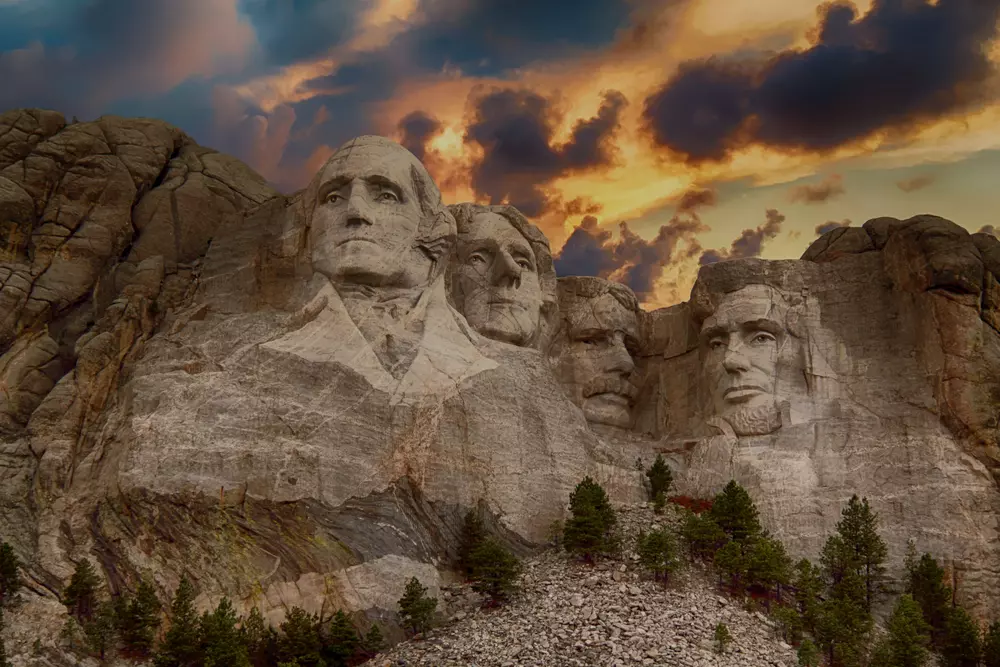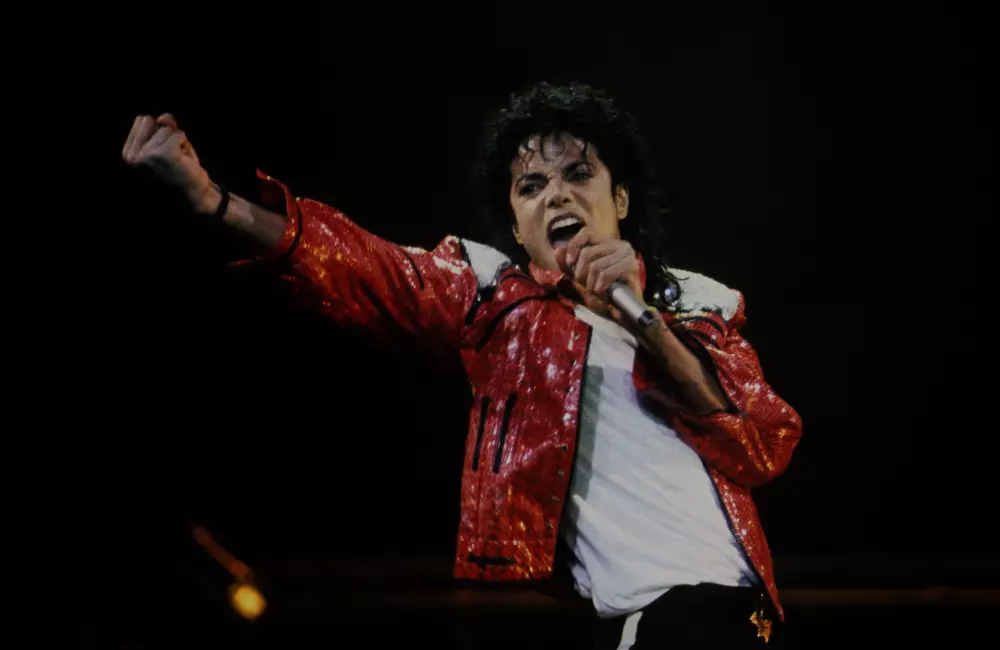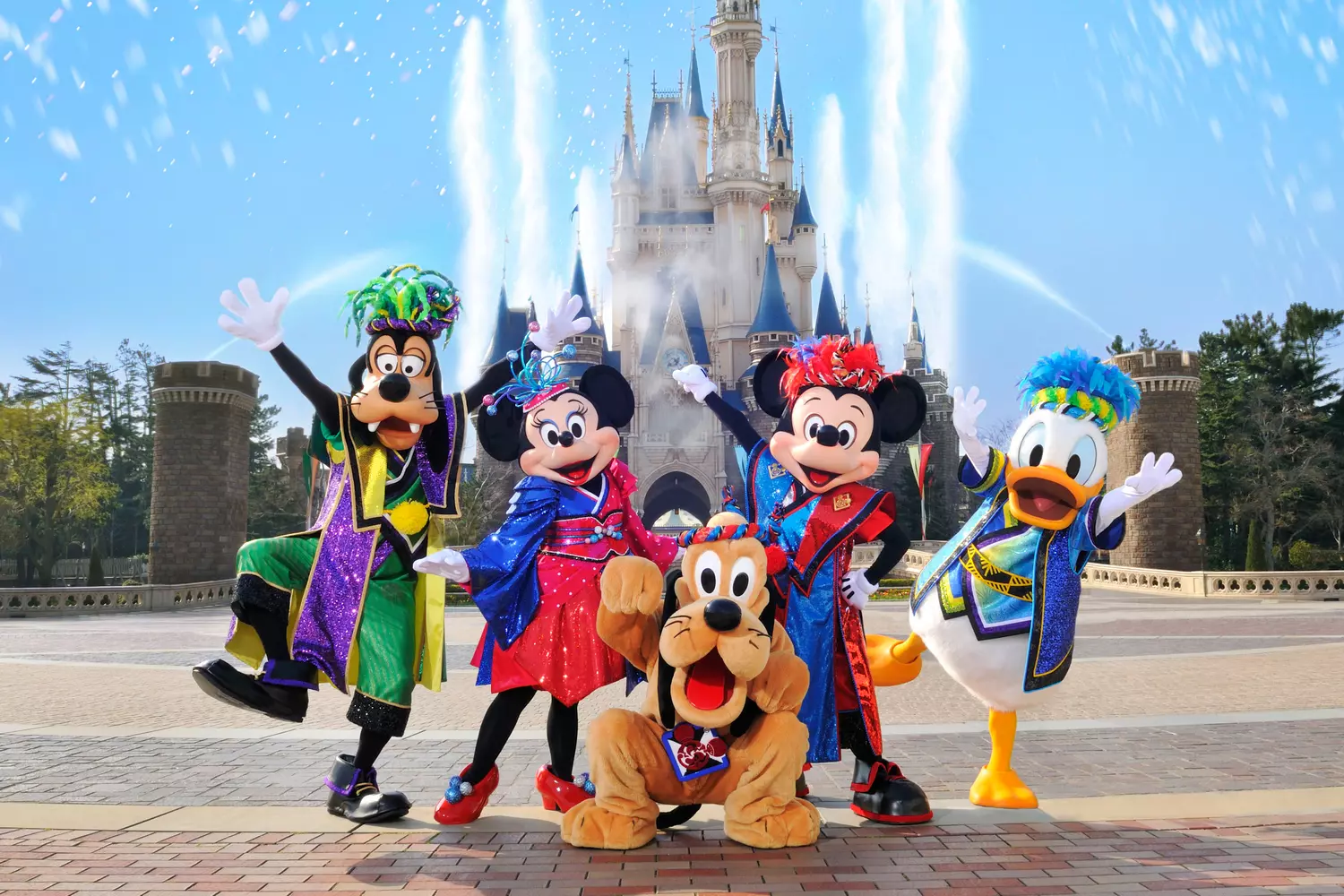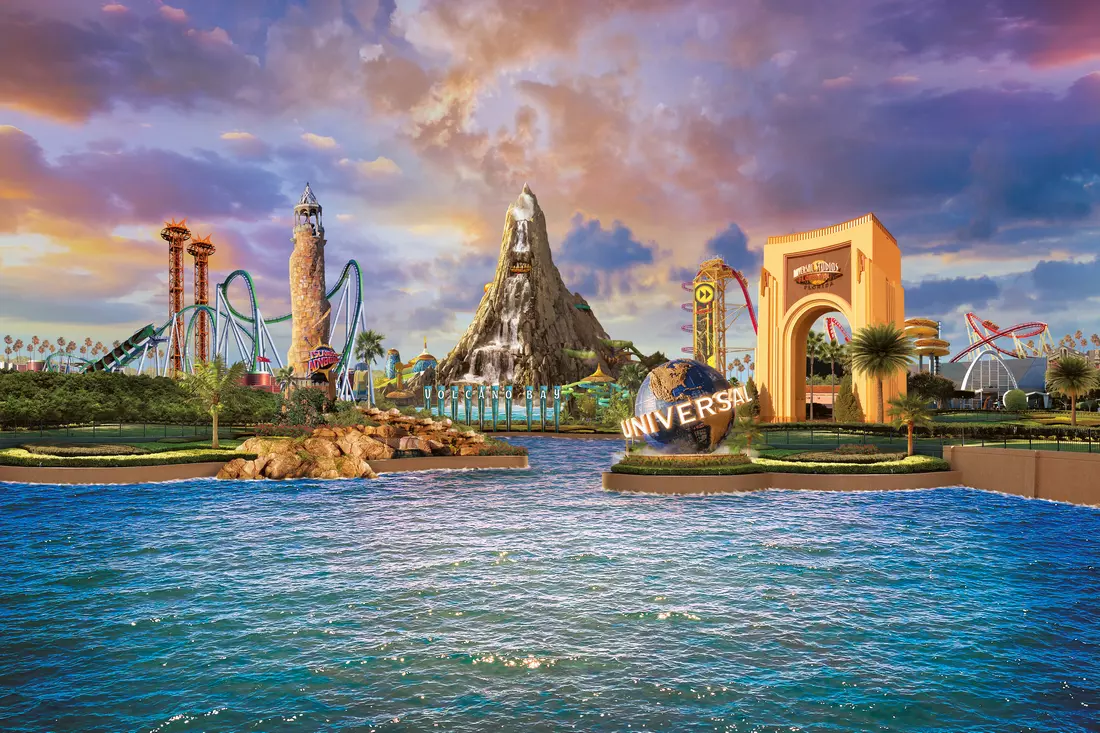In America, television is not just a source of information or entertainment. It is part of everyday culture, business, the political arena, and even upbringing. Americans love their TV, pay for it, debate it, create iconic shows, and then rewatch them for years. If you live in the U.S. or are planning to move there, it’s helpful to understand how the television system works, which channels are truly popular, where to watch them, and how to get connected.
Television in the U.S. has not only entertained generations but also influenced history. The Kennedy and Nixon debates in 1960 were the first televised political event that changed the course of the elections. Since then, TV has become a battlefield for the minds and hearts of Americans. It is not only home to legendary series and morning shows but also shapes the perception of events around the world. In this article, we will:
- Dive into the structure of U.S. television;
- Explore how channels and formats have evolved;
- Name the main TV channels and what they broadcast;
- Show where and how Americans watch TV today.
Television in the U.S. is a complex, dynamic, sometimes contradictory, but extremely fascinating ecosystem. Welcome behind the scenes of one of the most influential media markets on the planet.
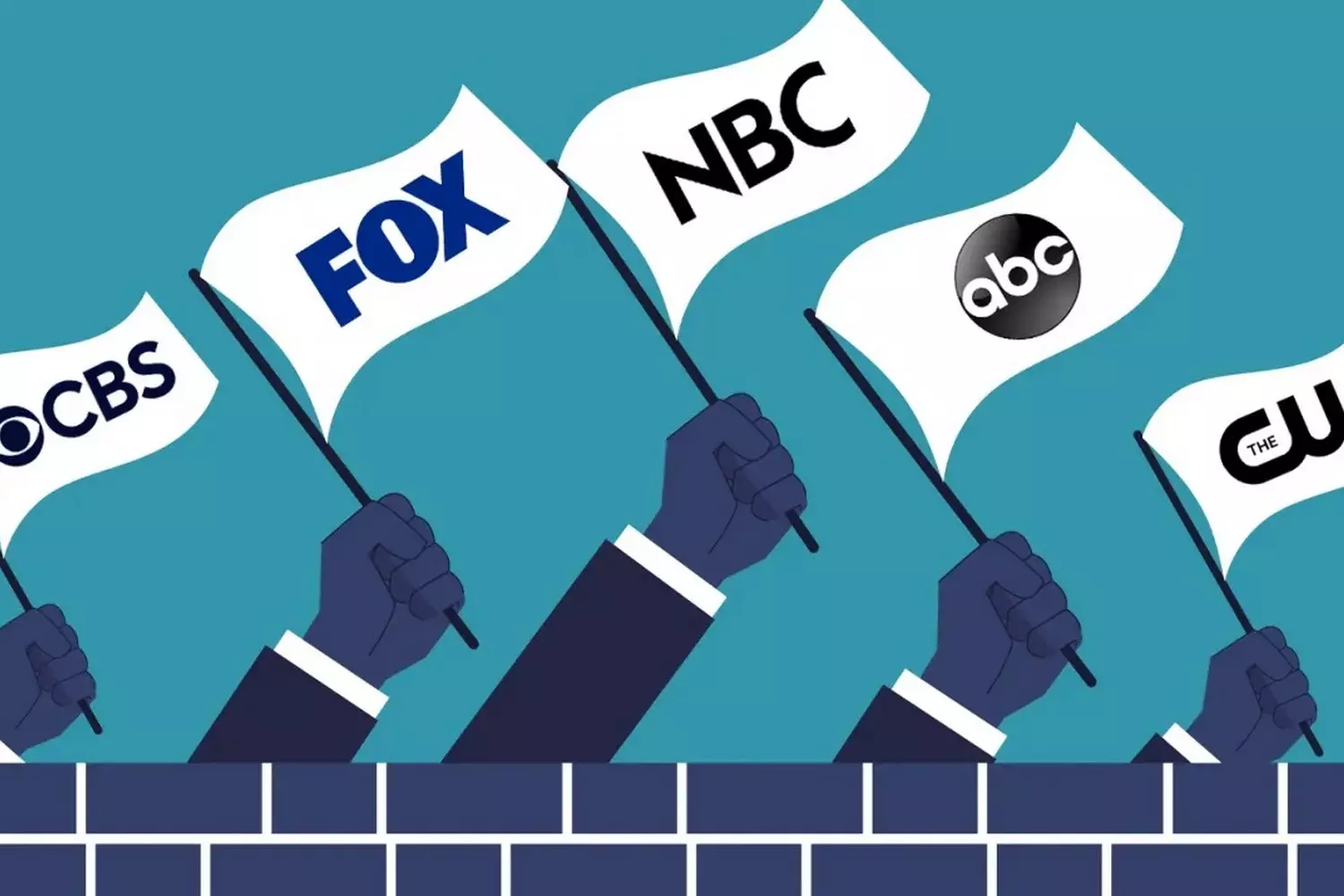
"U.S. TV channels have turned celebrities into products and viewers into consumers." — Andy Warhol
How It All Began: The History of Television in the U.S. — From Radio Waves to Streaming
Television in the USA has evolved from an invention to a cultural phenomenon that has reached every American household. The history of this phenomenon is the story of technology, business, and America itself. In each decade, TV has reflected the spirit of the times, changing not only entertainment but also politics, education, fashion, and lifestyle.
- 01. The Birth of Television (1920s–1940s)
Television in the U.S. began in the 1920s when scientists and inventors started experimenting with image transmission. However, widespread adoption only began in the late 1930s and early 1940s.
- In 1939, RCA (owner of NBC) demonstrated the first television broadcast at the New York World’s Fair.
- The first president to appear on TV was Franklin Roosevelt.
During World War II, development slowed, but by 1947 there were approximately 44,000 televisions in the country.
- 02. The Golden Age of Television (1950s–1960s)
Starting in the 1950s, the so-called Golden Age began. Television became mainstream. Almost every family owned a TV set. Networks like NBC, CBS, and ABC produced live dramas, sitcoms, and shows that became timeless classics.
- The first TV stars emerged.
- In 1951, the first episode of I Love Lucy — one of the most popular sitcoms of all time — aired.
- News broadcasts began airing live.
Television shaped a shared American culture. People across the country watched the same programs, discussed them, and lived within a unified information space.
- 03. The Rise and the Ratings Battle (1970s–1980s)
The 70s and 80s marked rapid growth for the television industry. Channels competed fiercely for primetime audiences, and new genres emerged:
- Late-night talk shows (e.g., The Tonight Show);
- Serial dramas and daytime soaps, such as the series Roots (1977), which became a national event with over 100 million viewers tuning in for the finale;
- On-the-scene news reports.
During this period, television became not only entertainment but also a source of social influence.
- 04. The Cable Television Era (1980s–1990s)
With the advent of cable TV, the U.S. entered a new era. Viewers no longer had to settle for just three or four channels. Dozens of specialized networks became available:
- CNN — the first 24-hour news channel (1980);
- MTV — a new take on music and youth culture;
- HBO — the beginning of premium paid content without commercials.
Viewers gained more choice. Audience segmentation began.
- 05. The Transition to the Digital Era (2000s–2010s)
At the turn of the millennium, television in the U.S. underwent digital transformation:
- Introduction of DVR and TiVo — allowing viewers to record and rewind broadcasts;
- Launch of HD broadcasts;
- Networks began developing online platforms.
YouTube, Netflix, and Hulu became serious competitors. Younger audiences started moving away from traditional TV to the internet.
- 06. The Streaming Revolution and the Era of Content (2010s–2020s)
Today, television in the U.S. is primarily subscription-based content. Netflix, Amazon Prime, Disney+, and Apple TV+ compete for exclusives, celebrities, and screenwriters. More and more series, mini-series, and documentaries are created specifically for online audiences.
- TV is no longer just a device but a concept.
- Everyone has their own programming schedule and favorite shows.
- TV has become interactive, personalized, and multi-platform.
Interesting fact: In 2022, the number of streaming service subscriptions in the U.S. surpassed the total number of cable TV subscribers for the first time.
The history of television in the U.S. is a journey from a small cathode-ray screen in the corner of a room to a universe of content on a smartphone. A journey that not only reflected societal changes but largely shaped them.
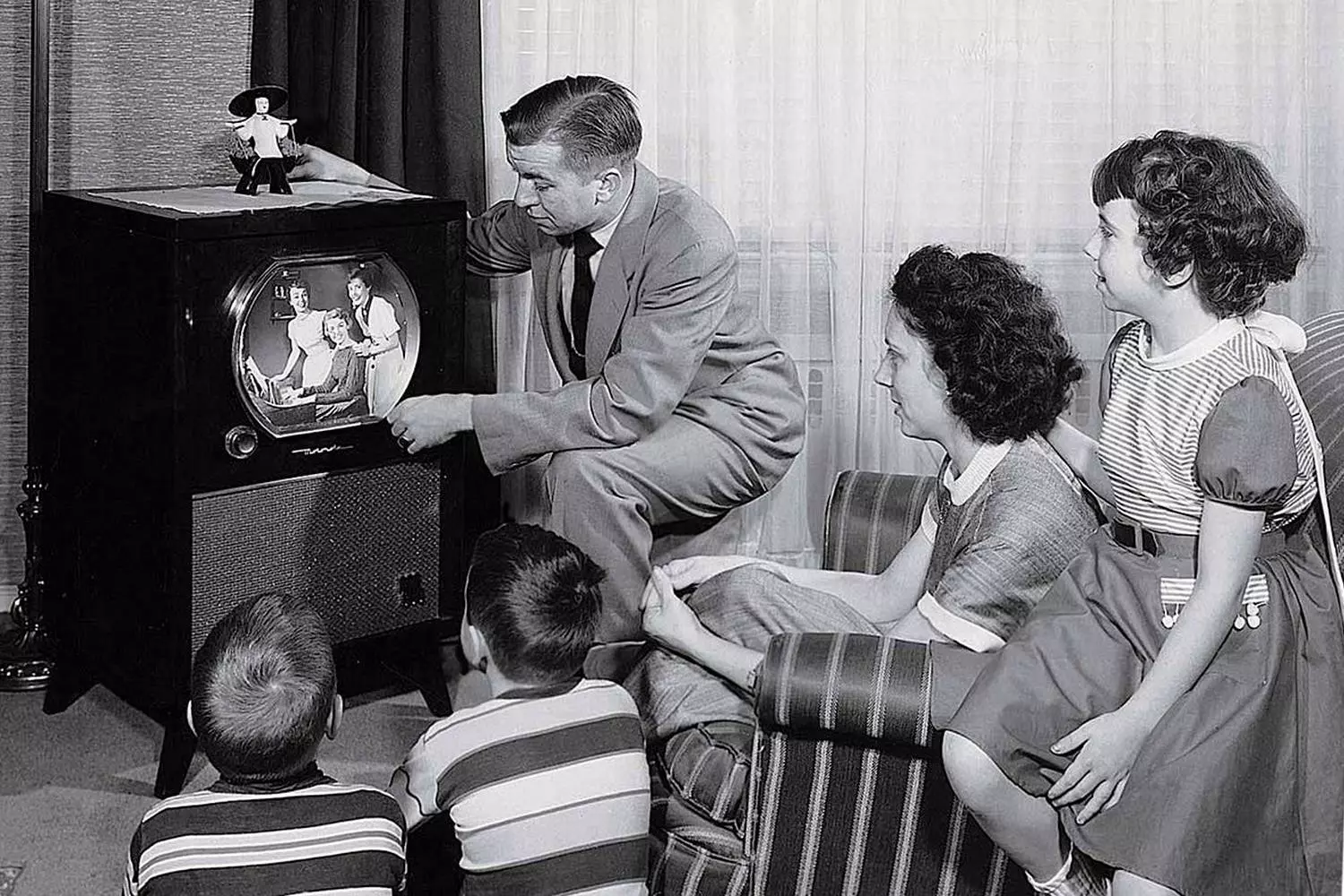
U.S. TV Unfiltered: How the World’s Most Influential Media Market Works
The American television system is a complex but logical structure based on a commercial model. It is divided into three main types of broadcasting:
- Broadcast TV
This is television that can be received with an antenna. It is technically free but not always convenient. Channels like NBC, ABC, FOX, and CBS are available this way almost nationwide. - Cable and Satellite TV
A paid model where viewers subscribe to providers such as Comcast (Xfinity), Spectrum, or DirecTV. In return, they get dozens or even hundreds of channels, including niche ones, from cooking to sports. - Digital and Streaming Platforms
The new flagship of American TV. Netflix, Hulu, Peacock, HBO Max, YouTube TV, Paramount+ — each offers different terms, packages, and subscription models.
Interesting to know: Over 80% of Americans aged 18 to 34 watch TV exclusively through streaming.
In the U.S., television has always developed outside of government monopoly. The largest networks — NBC, ABC, CBS, FOX — belong to media conglomerates:
- NBC — Comcast;
- ABC — The Walt Disney Company;
- CBS — Paramount Global;
- FOX — Fox Corporation.
Each of these giants produces both news and entertainment content, constantly competing for viewers’ attention and advertising budgets.
If you’re used to free TV, America might surprise you. Even basic access to channels often requires payment. A typical cable package costs between $60 and $150 per month. Streaming services also require a fee: Netflix — starting at $15, Hulu — from $8, HBO Max — from $15, and a full YouTube TV package costs about $70 per month.
For this money, viewers get:
- Content in HD or 4K;
- Minimal or no advertisements;
- The ability to watch on multiple devices;
- Access to archives and exclusives.
Interestingly, many Americans pay for several services simultaneously — creating a personalized TV space: news from one source, series from another, sports from a third.
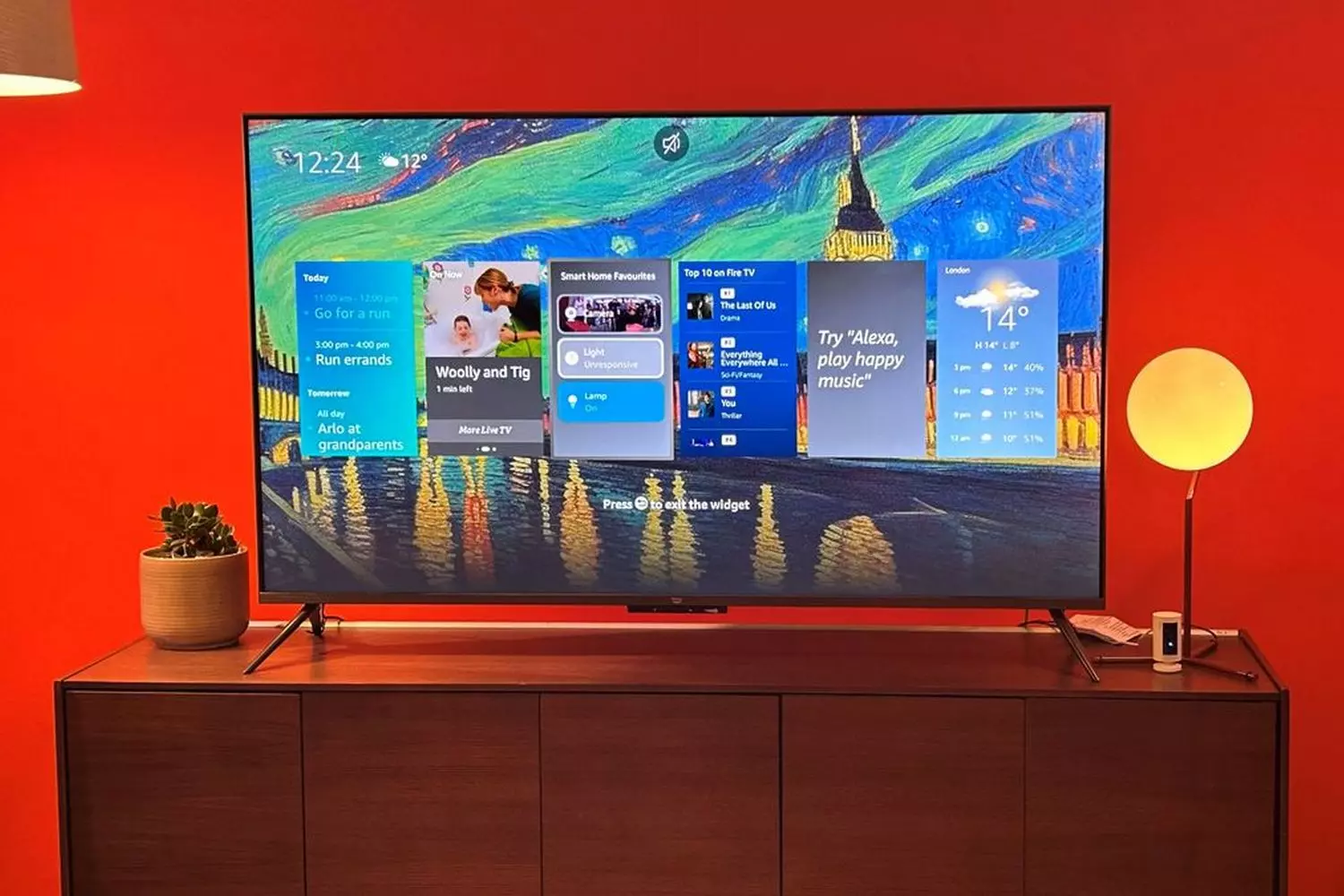
Media Landscape in the U.S.: Channel Types That Influence the Nation
In the USA, television is not just broadcasting. It is a system where every channel and genre answers a specific societal demand. Channels are categorized for a reason — behind each category stands an audience, advertisers, and a unique format. Let’s take a closer look at the main categories.
- 01. News Channels
CNN, Fox News, MSNBC, CBS News — the core of informational broadcasting. Each network has its own style, politics, and approach to delivering news:
- CNN — focuses on international affairs and breaking news, with a neutral (though sometimes controversial) tone;
- Fox News — strong right-wing rhetoric, patriotism, talk-show style debates;
- MSNBC — liberal perspective, analysis, focus on human rights and social issues;
- CBS News — old-school journalism standards, emphasis on reliability.
These channels shape political agendas, influence elections and public opinion. People watch them not for entertainment but to “stay informed.”
- 02. Entertainment Channels
NBC, ABC, CBS, FX, USA Network — this is where the juiciest content happens. Shows, comedies, reality, dramas:
- NBC — known for Saturday Night Live, The Office, This Is Us;
- ABC — flagship for talk shows and reality TV (The Bachelor, Shark Tank);
- FX — niche but powerful: American Horror Story, The Bear;
- USA Network — light-genre series: Suits, White Collar.
These channels create ratings, memes, and fan communities. They also host the most expensive advertising slots.
- 03. Children’s and Family Channels
Nickelodeon, Cartoon Network, Disney Channel — for the youngest and teenagers:
- Nickelodeon — comedy shows and cartoons: SpongeBob, iCarly;
- Cartoon Network — a bolder, more experimental approach (Adventure Time, Regular Show);
- Disney Channel — carefully curated, family-friendly Disney content.
These channels influence the upbringing, language, and habits of future generations.
- 04. Sports Channels
ESPN, Fox Sports, NBC Sports — the temple of American sports:
- Fox Sports — focuses on broadcasts, especially football and baseball;
- NBC Sports — hockey, Olympic Games, golf.
For many viewers, sports are the main reason for subscribing to TV.
- 05. Movies and Series
HBO, AMC, Showtime, Hallmark — channels for those who love stories:
- HBO — television masterpieces: Game of Thrones, The Sopranos, Euphoria;
- AMC — Breaking Bad, The Walking Dead, Mad Men;
- Showtime — bolder, provocative content: Dexter, Billions;
- Hallmark — cozy dramas, family movies, Christmas marathons.
- 06. Cultural and Educational Channels
PBS, History Channel, National Geographic — channels with a mission:
- PBS — non-commercial TV funded by donations. Nova, Masterpiece Theatre, children’s content without ads;
- History Channel — from documentaries to pseudoscientific shows, popularizing history;
- NatGeo — nature, geography, travel, science.
Perfect for family viewing and broadening horizons.
- 07. Regional and Local
Local channels in the USA are a whole universe. Each state, even each city, has its own broadcast schedule. Weather news, incidents, local politics, school events — all broadcast locally and have a huge audience.
Interesting fact: HBO was the first channel in the USA to become paid and show movies without commercials. This marked the beginning of the "premium television" era.
Each category of channels is not just a genre but a reflection of American society. TV here mirrors the interests, fears, hopes, and humor of the nation.
To truly understand American television, it’s not enough to know how it works — you need to look inside. Which channels do Americans love? What do they pay for? Which shows become cultural phenomena, and which vanish without a trace?
Next, we will talk about the most influential, popular, and recognizable TV channels in the USA. From the giants of national broadcasting to niche networks, from news podiums to serial factories — each holds its own role in the American TV ecosystem.
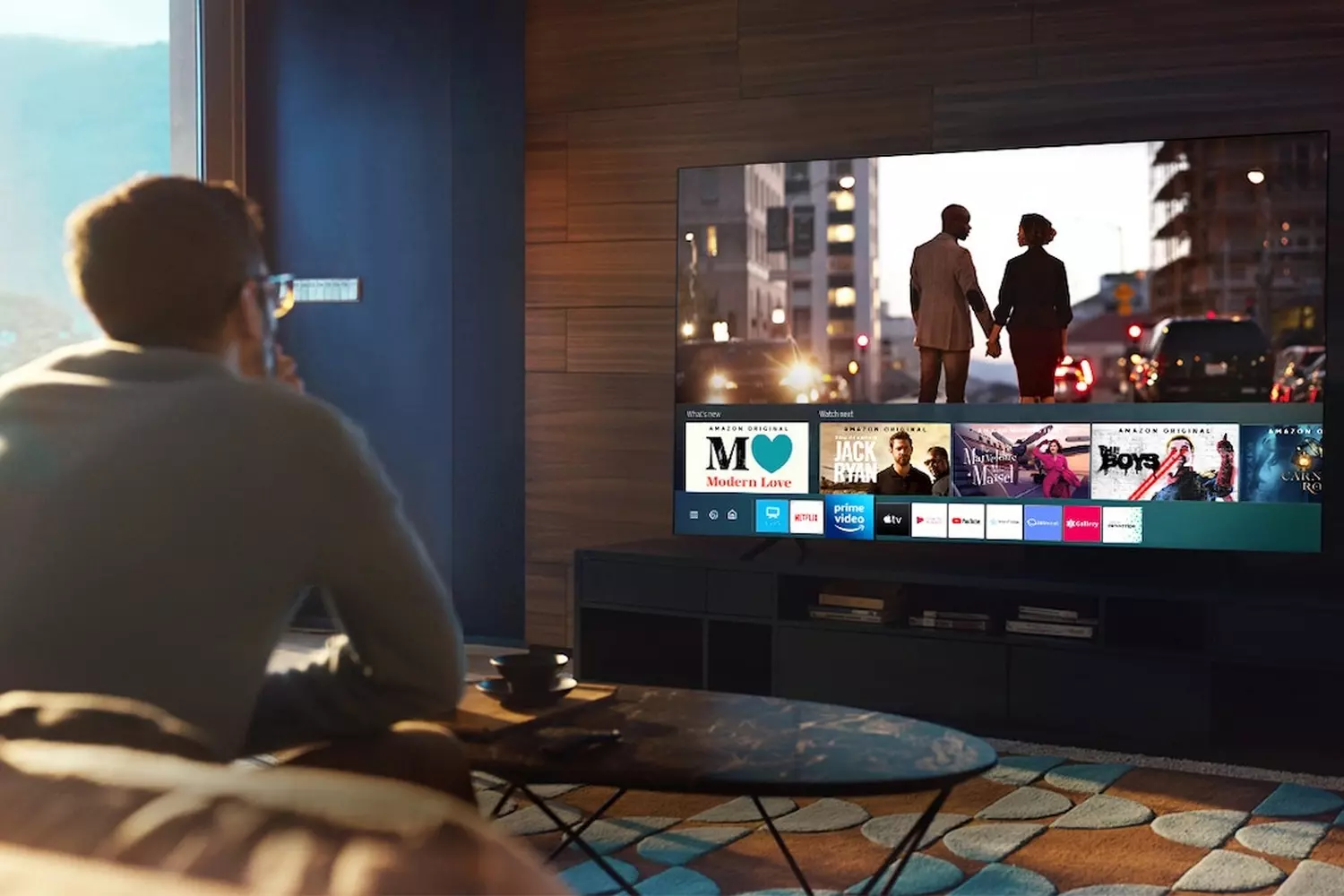
NBC: A National Institution in High Definition
NBC (National Broadcasting Company) is not just a TV channel. It is a symbol of American television, a synonym for quality, recognizable by its peacock logo, with a history that began in 1926. For over a century, NBC has set the tone in news, show business, and content production, shaping the cultural code of the nation.
- 01. History and Influence
NBC is the oldest broadcasting television company in the USA. It became the first national network, uniting radio stations and transitioning into the television era under the banner of innovation. Since the advent of TV as a format, NBC has broadcasted:
- The first live sports broadcasts;
- The first color television programs;
- The first evening news program.
- 02. What the Channel is Known for Today
NBC remains a universal giant. It has everything:
- News block
NBC Nightly News, Meet the Press, Today Show — recognized standards of television broadcasting. - Shows and Entertainment
Saturday Night Live — a cult satirical program that influences politics and fashion. - Series
This Is Us, The Blacklist, Law & Order: SVU — series that remain top-rated for years. - Live Events
Olympics broadcasts, sports events, concerts, and even the Thanksgiving Day parade.
- 03. Audience and Reach
NBC is a channel for all ages and interests. It broadcasts nationwide, has affiliates and partner stations in every state. During prime time, NBC consistently ranks among the top three in viewership. - 04. What Makes NBC Special?
- The ability to balance news and entertainment;
- High quality of content and production;
- The capacity to reinvent itself: from traditional TV to streaming through the Peacock platform.
Interesting fact: NBC launched Saturday Night Live in 1975. Since then, the show has become the country’s political barometer and a launching pad for dozens of celebrities — from Eddie Murphy to Tina Fey.
NBC is television that knows how to be serious and funny, deep and popular, innovative and recognizable. If you’re looking for quality content that reflects America in all its diversity — start with NBC.
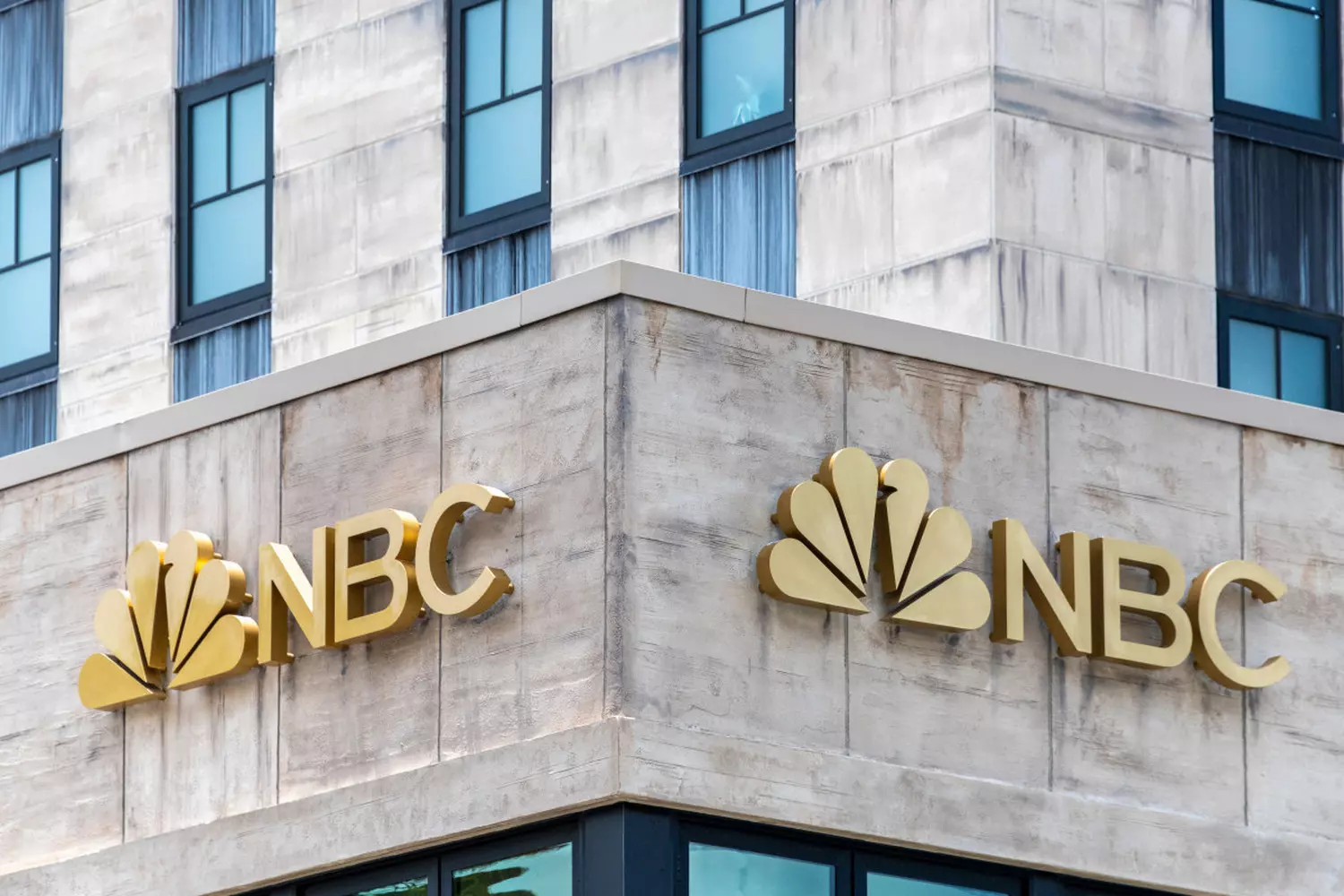
ABC: Pioneering Truly Family-Friendly Television
ABC (American Broadcasting Company) is one of the main players in the U.S. broadcast TV market. If NBC stands for intellect and show business, ABC is all about emotion, drama, and mass engagement. The channel knows how to speak to a diverse audience: moms, teenagers, homemakers, couples, and retirees. ABC has launched dozens of popular formats that have become hallmarks of American television.
- 01. History and Ownership
The channel was founded in 1943 as NBC’s “younger sibling,” but over time it became an independent and influential media structure. Today, ABC is owned by The Walt Disney Company, which explains its focus on a mass audience, high production quality, and emphasis on family values. - 02. Iconic Shows and Series
ABC is a factory of TV masterpieces. The channel has aired:
- "Grey’s Anatomy" — one of the longest-running medical dramas, becoming a global phenomenon;
- "Desperate Housewives" — a cult story about suburban life, ironic, dramatic, and quintessentially American;
- "Lost" — a series that changed the approach to the mystical drama genre on TV;
- "Modern Family" — a comedy that redefined the concept of a family sitcom.
Additionally, ABC broadcasts top shows: - The Bachelor — the country’s main romantic reality flagship;
- The Bachelorette — its female counterpart;
- Dancing with the Stars — celebrity dance battles;
- Shark Tank — a startup battle inspiring millions of viewers.
- 03. News and Current Affairs
ABC has a strong news block:
- ABC World News Tonight — one of the highest-rated evening news programs;
- Good Morning America — a morning show watched nationwide before work and school.
News on ABC is delivered vividly, focusing on human stories and positivity.
- 04. Audience and Style
ABC is a channel that doesn’t just inform or entertain. It engages. The programming is designed to resonate with every family member. From kids to grandparents — everyone has their favorite project on ABC.
Interesting fact: ABC was the first network to widely launch prime-time series aimed at women, which was revolutionary in the 1980s and still influences programming policies today.
ABC is a channel that generations grow up with. It balances drama and lightness, relevance and comfort, creating television you want to watch together. If you want to feel the beating cultural heart of America — just turn on ABC.
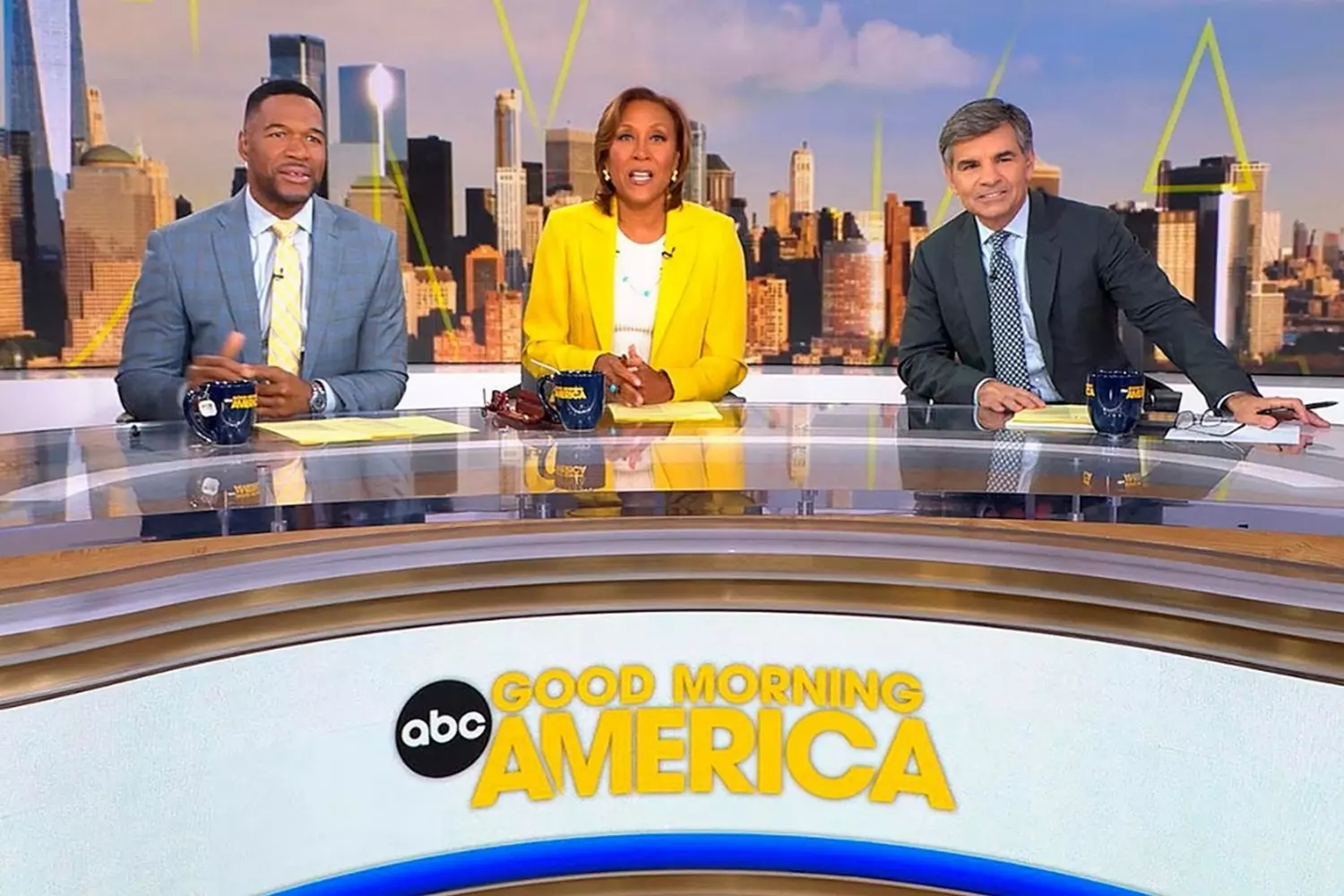
FOX: The Rebel Network That Turned Into an Icon
FOX is a phenomenon of American TV. The channel, which appeared later than all the “big three” (in 1986), managed to break into the leaders in just a few years. Its secret? An aggressive approach, a youthful style, provocations, experiments — and, of course, an incredible instinct for hit content.
If NBC is show business, ABC is family, CBS is stability, then FOX is challenge, drive, and protest. This channel knows how to keep its finger on the pulse of culture and politics, simultaneously shaping trends and breaking traditions.
- 01. How It All Began
FOX launched in 1986, when media mogul Rupert Murdoch bought a network of independent stations and decided to build competition against the “Big Three” (NBC, CBS, ABC). At first, FOX was met with skepticism: who would watch a new channel with limited coverage? But Murdoch played the long game — and won.
By the late ’80s, FOX caused a sensation with the series Married... with Children — a bold comedy that shattered the image of the “perfect American family.” Following that came:
- The X-Files;
- The Simpsons — an animated series still running today, which has become part of American DNA.
FOX quickly became the main channel for Generation X and Millennials, speaking their language.
- 02. What Makes FOX Special
- Provocation is a strategy
The channel is not afraid of controversial topics. It gives a platform to both liberals and conservatives, producing shows about teens, vampires, office eccentrics, and superheroes. - Powerful entertainment block
FOX launches hit reality shows such as American Idol, The Masked Singer, and So You Think You Can Dance. - Information core — Fox News
A political channel that became one of the most influential in the U.S. Loved by Republicans and supporters of Trump. Criticized but widely watched. - Sports
FOX Sports is one of the largest broadcasters of the NFL, MLB, and soccer championships.
- 03. Audience and Influence
FOX is a channel for those who dislike rules. It has become home to millions of viewers tired of moralizing and formalism. Its audience is young, active, independent, and often politically conservative.
Interesting fact: FOX was the first channel to produce dramas with anti-hero narratives — characters were not always likeable, and audiences loved it.
And although FOX is often accused of manipulation or bias, its contribution to television is undeniable:
- It changed the language of shows;
- Launched new formats;
- Broke the monopoly of old channels;
- Became a powerful voice for an entire generation.
FOX is like a rock band in a world of symphony orchestras. Noisy, controversial, but sincere. And that’s exactly its strength.
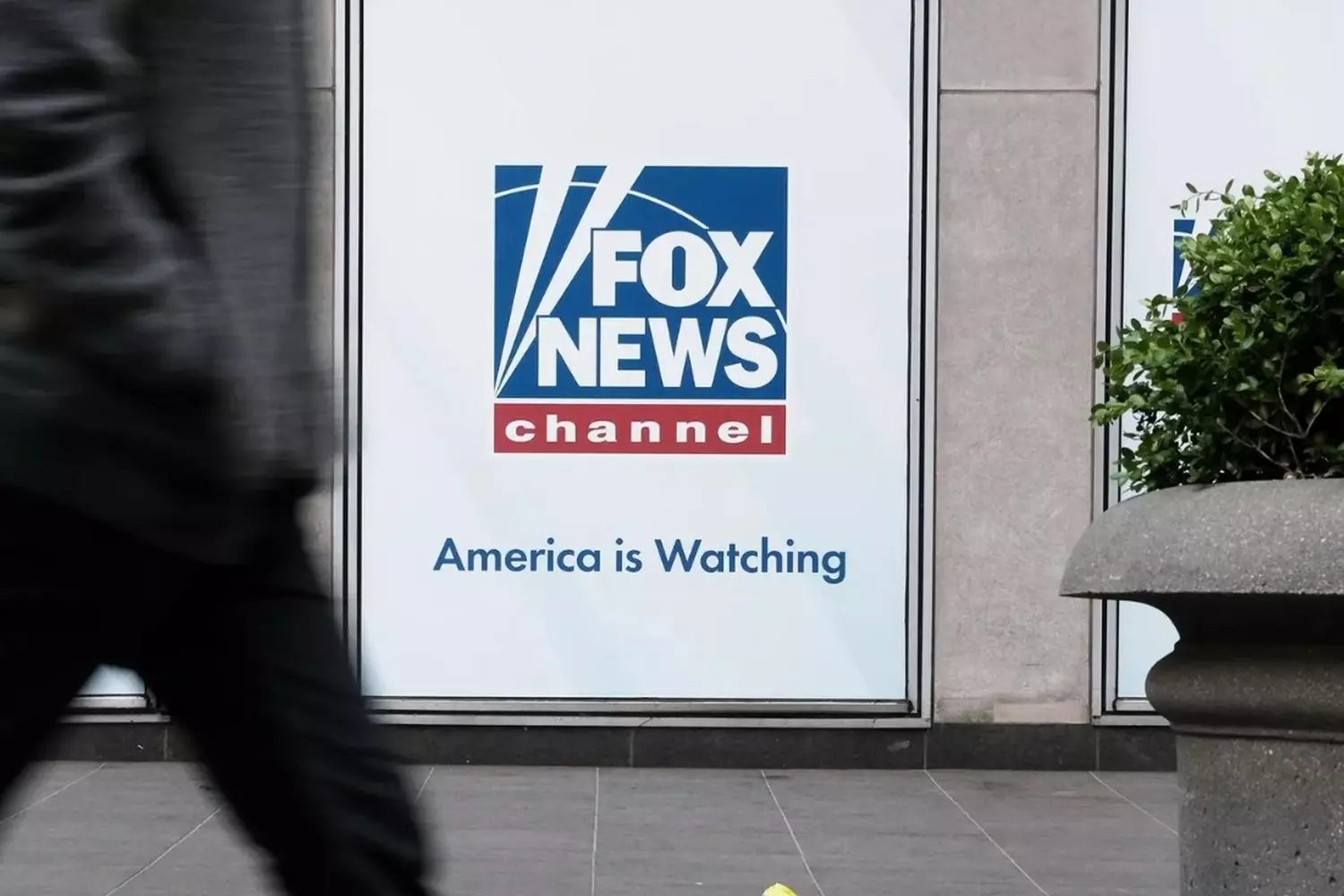
CNN: Leading 24-Hour News and Speaking for the Global Community
CNN (Cable News Network) is a channel that forever changed the world of news television. Founded in 1980 by Ted Turner, CNN was the first channel in history to broadcast news 24/7, making information available around the clock, 7 days a week.
- 01. How did the idea of CNN come about?
In the late 1970s, traditional news was limited to morning and evening broadcasts on major networks. Ted Turner, a successful media businessman, saw a huge gap: what if there was a channel that delivered real-time news, non-stop? The risk was enormous, and no one knew if such a format would find an audience.
But on the very first day of broadcasting, June 1, 1980, CNN became the source of information for millions of Americans. Live broadcasts, instant reports, and unique materials quickly made the channel indispensable. - 02. Major milestones and reports of CNN
- The Gulf War (1991) — CNN became the primary source of live information, showing battles in real time. This event made the channel truly global.
- The 9/11 attacks (2001) — CNN covered the tragedy non-stop for many hours, providing live reports and expert analysis.
- Presidential elections and debates — CNN has always been at the forefront, offering in-depth analysis and interviews with candidates.
- Crises and natural disasters — from hurricanes to the COVID-19 pandemic, CNN strives to stay at the center of events.
- 03. CNN’s format and style
CNN is more than just news. It offers analysis, interviews, talk shows, and documentaries. The channel aims to balance speed with depth, although critics sometimes accuse it of bias.
- On air — programs with world-class anchors like Anderson Cooper, Christiane Amanpour, and others.
- Strong focus on international affairs.
- Emphasis on multimedia: online, social networks, mobile apps.
- 04. CNN’s audience
CNN attracts a broad audience — from students to businesspeople, from homemakers to politicians. Its viewers want to stay informed about world events here and now.
Interesting fact: CNN was the first TV channel to switch entirely to HD broadcasting in 2008, setting a new industry standard for quality.
In the digital age, CNN continues to adapt: developing online platforms, streaming, and creating original content for YouTube and TikTok. In a world where information is power, CNN remains one of the leading voices shaping public opinion.
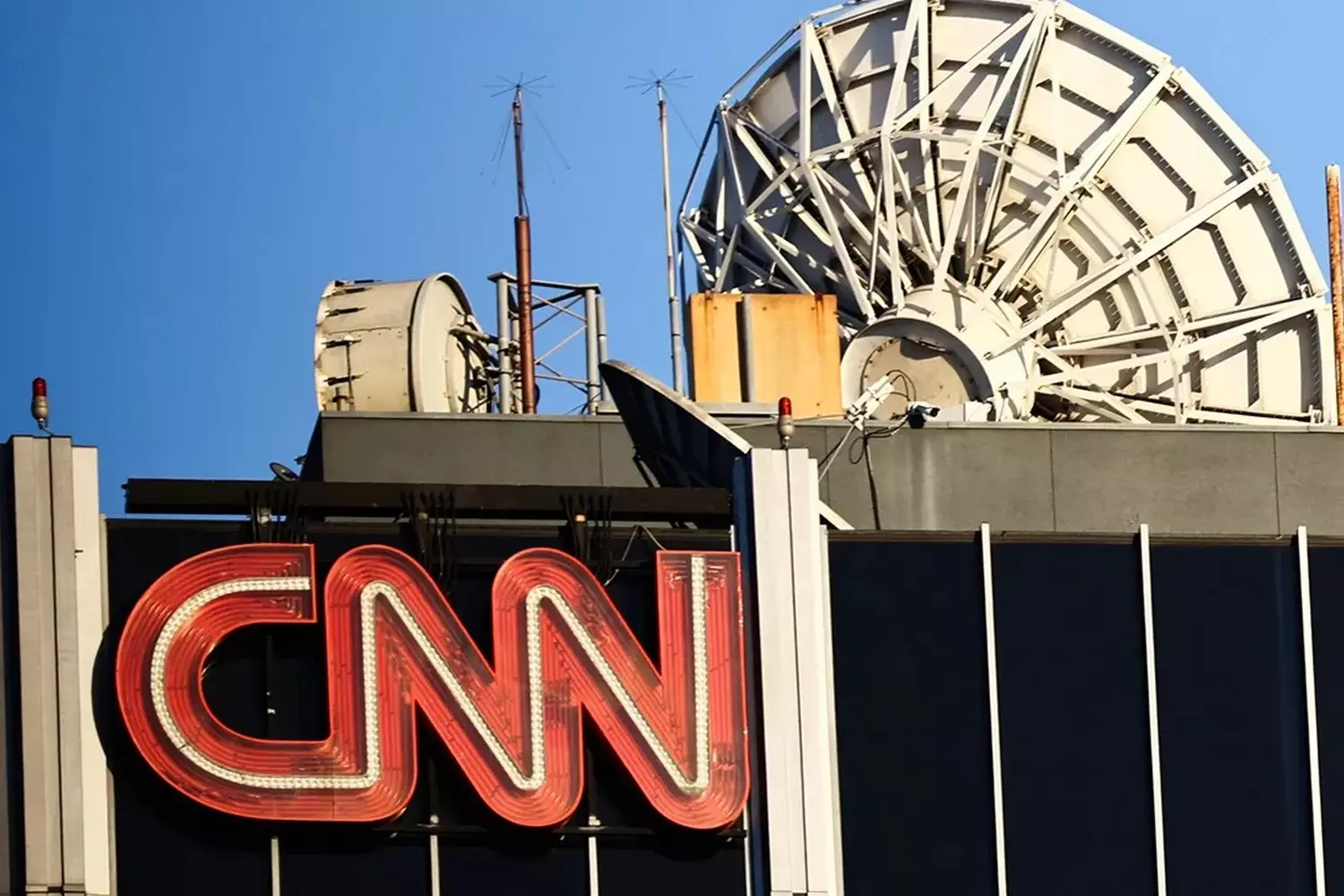
HBO: Leading Premium TV and Delivering Legendary Series
HBO (Home Box Office) is not just a TV channel but a true phenomenon in the world of television. Launched in 1972, HBO was the first in the US to offer viewers paid television without commercials — a model that changed the way people think about content and TV itself.
- 01. How HBO changed the game
Before HBO, American television was built on an advertising model: channels broadcasted for free but with regular commercial breaks. HBO offered to pay for high-quality, uninterrupted content — and this became a true revolution.
- In 1972, HBO started by airing movies unavailable on broadcast channels.
- Over time, the channel began producing its own original content — series, shows, documentaries.
- The “premium TV” model allowed HBO to invest in quality, experimentation, and creative freedom.
- 02. Legendary series and projects
HBO gave the world many series that became cultural icons:
- Game of Thrones — an epic fantasy that gathered millions of fans worldwide and changed the standards of TV production.
- The Sopranos — a mafia drama considered one of the best series of all time.
- True Detective — an anthology of crime stories with deep characters and a unique atmosphere.
- The West Wing — a political drama revealing the workings of the White House.
- Veep and Barry — comedies acclaimed by critics and audiences alike.
- 03. Why HBO is unique
- No commercials — viewers stay fully immersed in the story.
- High budget — HBO invests millions of dollars into each project.
- Creative freedom — the channel gives directors and writers artistic freedom, leading to unique and profound content.
- Premium production quality — from script to cinematography and special effects.
- 04. Expansion and the digital era
With the rise of streaming, HBO launched HBO Max — a platform where viewers can watch both classic and new shows and movies anytime, on any device. This helped the channel stay competitive in the world of Netflix and Amazon Prime. - 05. HBO’s audience
HBO attracts viewers who appreciate high-quality drama and genre content. These are people ready to pay for the best viewing experience and exclusive stories.
Interesting fact: HBO was the first channel to show fully computer-generated special effects in a series — the visual effects in Game of Thrones became a true breakthrough in television.
HBO is a symbol of quality and innovation in the television world. A channel that changed the rules of the game and proved that television can be art.
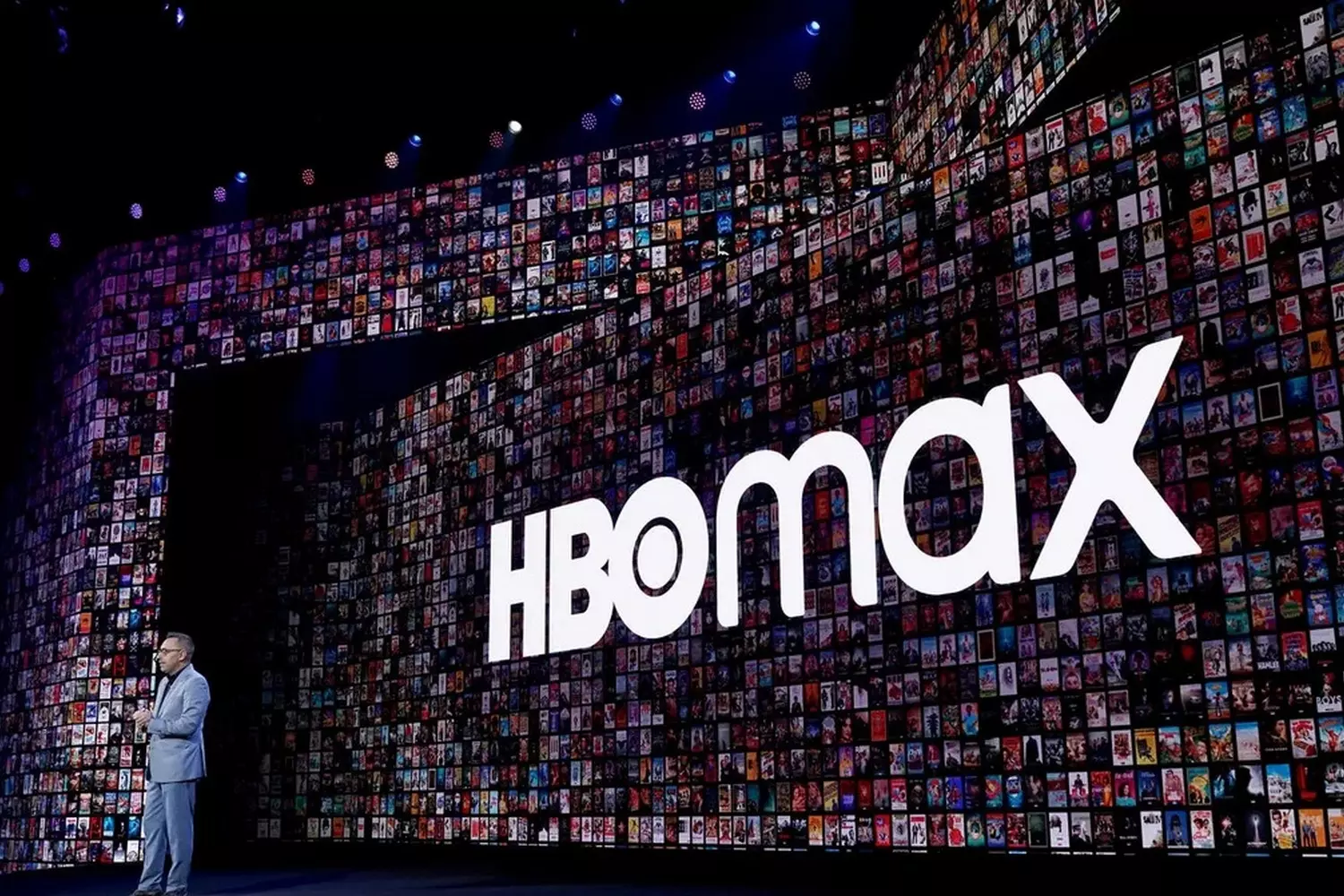
Let’s Continue Exploring the Leading TV Channels in the U.S.
American television is not just a collection of channels but a complex ecosystem with a rich history and a vivid individuality of each participant. In the previous section, we covered the basic categories and several of the biggest players. Now it’s time to dive deeper into the most influential and iconic TV channels that shape the US television landscape, set trends, and attract millions of viewers across the country.
Each of these channels is unique in its format, audience, and influence — together they create a vibrant mosaic of American TV.
- 01. CBS — classic and reliable for the older generation
CBS is one of the oldest and most influential TV networks in the US. It is especially popular among older viewers who appreciate its traditional approach to news and entertainment.
- CBS hits
Series like NCIS, Survivor, and the program 60 Minutes — a legendary investigative journalism show. - Style
CBS combines classic news and entertainment shows while not shying away from experimenting with formats. - Audience
Primarily adults and seniors who value stability and quality.
Interestingly, 60 Minutes is one of the longest-running TV programs in history, airing since 1968 and having received numerous prestigious awards.
- 02. Freeform — stories for those growing up in the 21st century
Freeform is an American cable channel owned by Disney, targeting teenagers, college students, and young adults. While MTV speaks the language of provocation and trends, Freeform focuses on emotions, self-identity, and the search for oneself, especially among young women and men aged 18–34.
- Format: contemporary dramas, romantic series, teen shows, LGBTQ+ topics, socially relevant themes.
- Popular projects: Pretty Little Liars, The Fosters, Grown-ish, Good Trouble, Cruel Summer.
- Audience: teenagers, college students, young professionals — those looking for “their reflection” on screen.
- Feature: Freeform is not afraid to tackle difficult topics — from racial identity to sexuality, social inequality to mental health. The content is both light and profound.
Freeform is a place where growing up is not taboo but a journey. The channel captures the moment when a person ceases to be a child but is not yet an adult — helping them find answers.
- 03. MSNBC — the liberal answer to Fox News
MSNBC positions itself as a liberal and progressive news channel. It serves as a counterbalance to Fox News, offering an alternative perspective on current events.
- Features: political talk shows with an analytical focus, debates, in-depth reports.
- Famous hosts: Rachel Maddow, Chuck Todd, Lawrence O’Donnell.
- Audience: Democrats, liberal-minded citizens, urban residents.
MSNBC helps create “information bubbles” on the opposite side of the political spectrum, reflecting the deep political polarization in the US.
- 04. PBS — public television with a mission for education and culture
PBS (Public Broadcasting Service) is a unique channel that operates not for profit but for the public good. There are no commercials here, but plenty of programs about science, art, education, and culture.
- Content: documentaries, educational programs, children’s shows (Sesame Street is one of the most famous).
- Mission: making knowledge accessible to all, supporting cultural heritage.
- Funding: government grants, donations from viewers and organizations.
PBS is the “brain” of American television, a place where a deep and respectful attitude towards knowledge and culture is formed.
- 05. ESPN — sports for the whole country
ESPN is the absolute leader among sports channels. From NFL and NBA broadcasts to studio shows and analysis — ESPN covers the entire spectrum of sports interests.
- Formats: live broadcasts, reviews, interviews with athletes, documentary projects.
- Audience: sports fans of all ages and professions.
- Innovations: use of new technologies for game analysis and fan engagement.
ESPN is not just sports; it’s a lifestyle for millions of Americans.
- 06. Showtime — premium channel with a focus on drama and cinema
Showtime is a paid channel competing with HBO, offering original series and films.
- Famous projects: Dexter, Homeland, Billions.
- Features: edgy topics, high-level dramaturgy, uncensored content.
- Audience: adults who appreciate quality and provocative content.
- 07. The CW — home for youth audience and superheroes
The CW specializes in series aimed at teenagers and young adults.
- Popular shows: Riverdale, The Flash, Supernatural.
- Style: dramatic, sometimes fantastical, with elements of youth culture.
- Audience: teenagers and young adults.
- 08. History Channel and National Geographic — educational TV
These channels focus on history, science, nature, and culture.
- Historical reenactments, documentaries, and educational programs.
- Popular shows: Ancient Aliens (History Channel), Cosmos (National Geographic).
- Audience: knowledge lovers and adventure seekers.
- 09. TBS — humor, sitcoms, and light entertainment for everyone
TBS (Turner Broadcasting System) is a channel associated with comedy, relaxing series, and shows for a broad audience. It doesn’t strive for seriousness but offers viewers evening laughter and a cozy atmosphere.
- Format: reruns of cult sitcoms, original shows, stand-up, light movies.
- Popular projects: Friends (reruns), The Big Bang Theory, American Dad!, original shows like Miracle Workers.
- Audience: young adults, families, viewers looking for comfortable content without drama.
- Feature: TBS often becomes the “background” for evening relaxation — it doesn’t require tension, just joy.
The channel’s slogan “Very Funny” perfectly reflects its mission — to be simple, fun, and always relevant.
- 10. MTV — a pop culture icon that grew up with Generation Z
MTV (Music Television) is more than just a channel. It’s a phenomenon that since 1981 has shaped youth tastes in the US and worldwide. Once solely a music video channel, today MTV is about reality, trends, challenges, and the culture young people live in.
- Format: reality shows, trendy challenges, talk shows, special music events, themed marathons.
- Most famous projects: Jersey Shore, Catfish: The TV Show, Teen Mom, Ridiculousness, The Challenge.
- Audience: teenagers, college students, millennials, Generation Z. MTV remains the main channel reflecting current youth trends.
- Feature: MTV is constantly evolving. It knows how to read the mood of the times — from the musical revolutions of the ’80s to TikTok aesthetics and cultural debates of the 2020s.
MTV was the first to bring music to television, the first to give youth a voice on air — and still remains a platform for freedom of expression.
American television is a diversity of formats and perspectives. From commercial giants with millions of viewers to public channels with an educational mission. Everyone can find something to their liking — whether politics, sports, culture, or entertainment.
These channels don’t just broadcast — they shape public opinion, create trends, and unite millions of people in front of their screens.
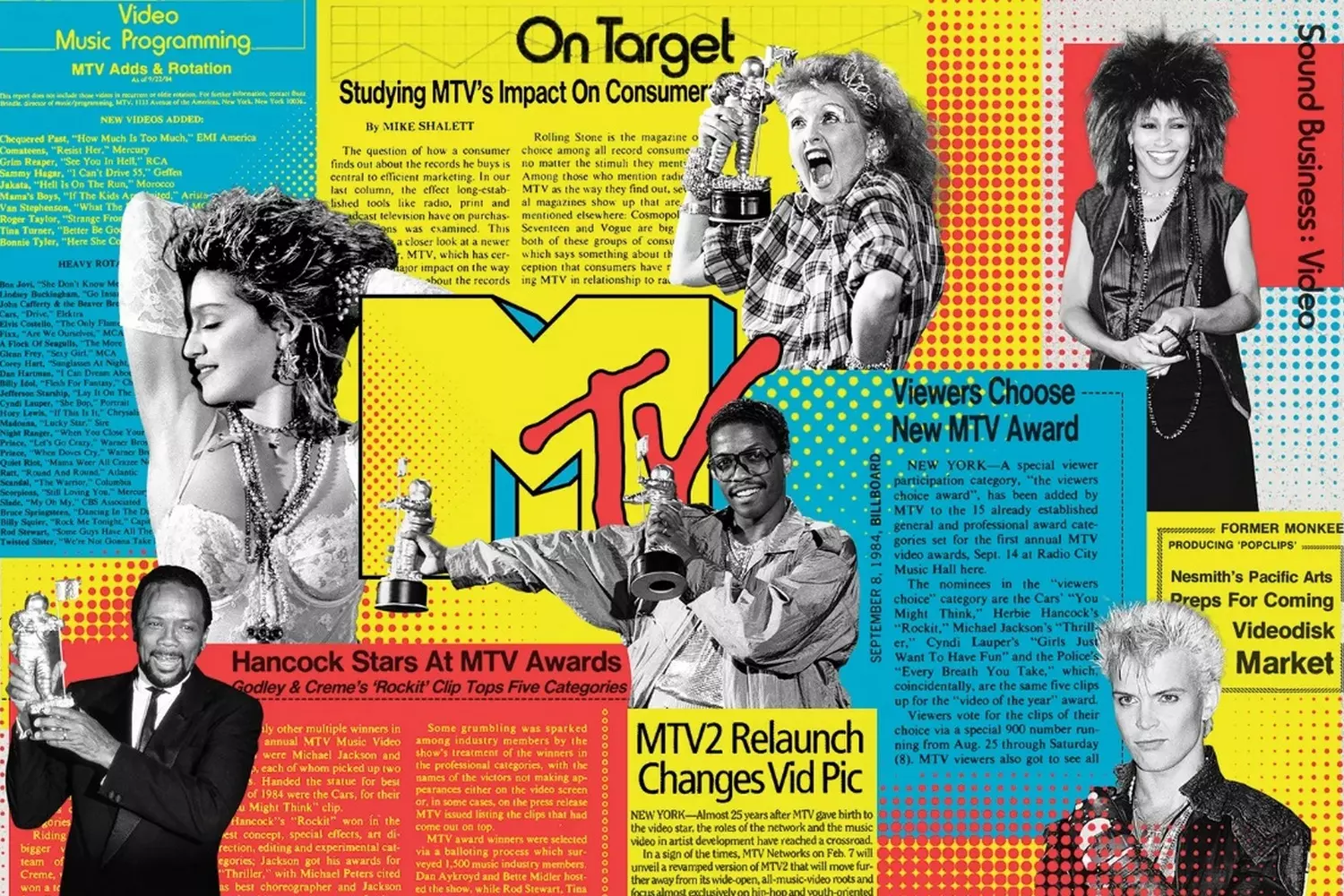
What’s Popular in America: TV Ratings and Audience Preferences Revealed
The American viewer represents a vast, diverse, and highly demanding market. From the young to the elderly, from sports fans to political talk show enthusiasts—everyone has their favorite genres and programs. To understand the television landscape of the USA, it is important to figure out what is popular and why.
- 01. Morning shows — an energetic start to millions of days
The morning in the USA begins with programs like Good Morning America (ABC) and Today Show (NBC). These shows are not just news, but a whole ritual:
- News, weather, celebrity interviews;
- Health, fashion, and lifestyle tips;
- Musical performances and entertainment segments.
For many Americans, morning shows are a way to set the tone for the day, get useful information, and enjoy some entertainment before work.
- 02. Late-night talk shows — evening relaxation with humor
In the evening, after the workday is over, Americans choose humor and witty commentary. On stage are programs like The Late Show with Stephen Colbert, Jimmy Kimmel Live!, and others.
- Satire on politics and society;
- Interviews with actors, musicians, and athletes;
- Musical numbers and comedy sketches.
Late-night shows do more than entertain — they shape public opinion and often become sources of memes and viral videos.
- 03. Prime-time news — when every minute counts
Evening news on CBS, NBC, and ABC channels is an opportunity to learn the main events of the day. Programs like CBS Evening News and NBC Nightly News gather millions of viewers.
- Analysis and reports from the scene;
- Interviews with experts and politicians;
- Overview of global and national news.
For Americans following important events, this is an indispensable source of information.
- 04. Series and dramas — the heart of American television
Favorite series are what keep viewers coming back to their screens again and again. Among the hits:
- NCIS — a crime drama with detective elements;
- Law & Order — a classic legal drama;
- Yellowstone — a modern drama about family conflicts and land disputes.
These series feature deep character development and gripping plots that keep viewers on edge.
- 05. Reality shows — life as it is
Reality is a genre that has become an integral part of American TV:
- The Voice — a musical show discovering talents;
- Survivor — extreme challenges and survival on screen;
- The Bachelor — romantic dramas and intrigues.
Reality shows allow viewers to immerse themselves in real emotions, challenges, and unexpected twists.
Every year, Nielsen publishes data about who watches what and when on TV. These ratings are not just numbers but a key guide for TV channels and advertisers.
- Advertising budgets depend on show popularity;
- Content producers focus on audience preferences;
- Ratings influence the fate of series: whether a season will be renewed or a project canceled.
Interesting fact: According to Nielsen, despite the growth of streaming, traditional television still retains about 70% of the US audience, especially among older generations.
American television reflects the diversity and dynamics of society, where everyone can find something for themselves. From morning coffee with a favorite show to late-night laughter and drama—TV remains an important part of millions of lives.
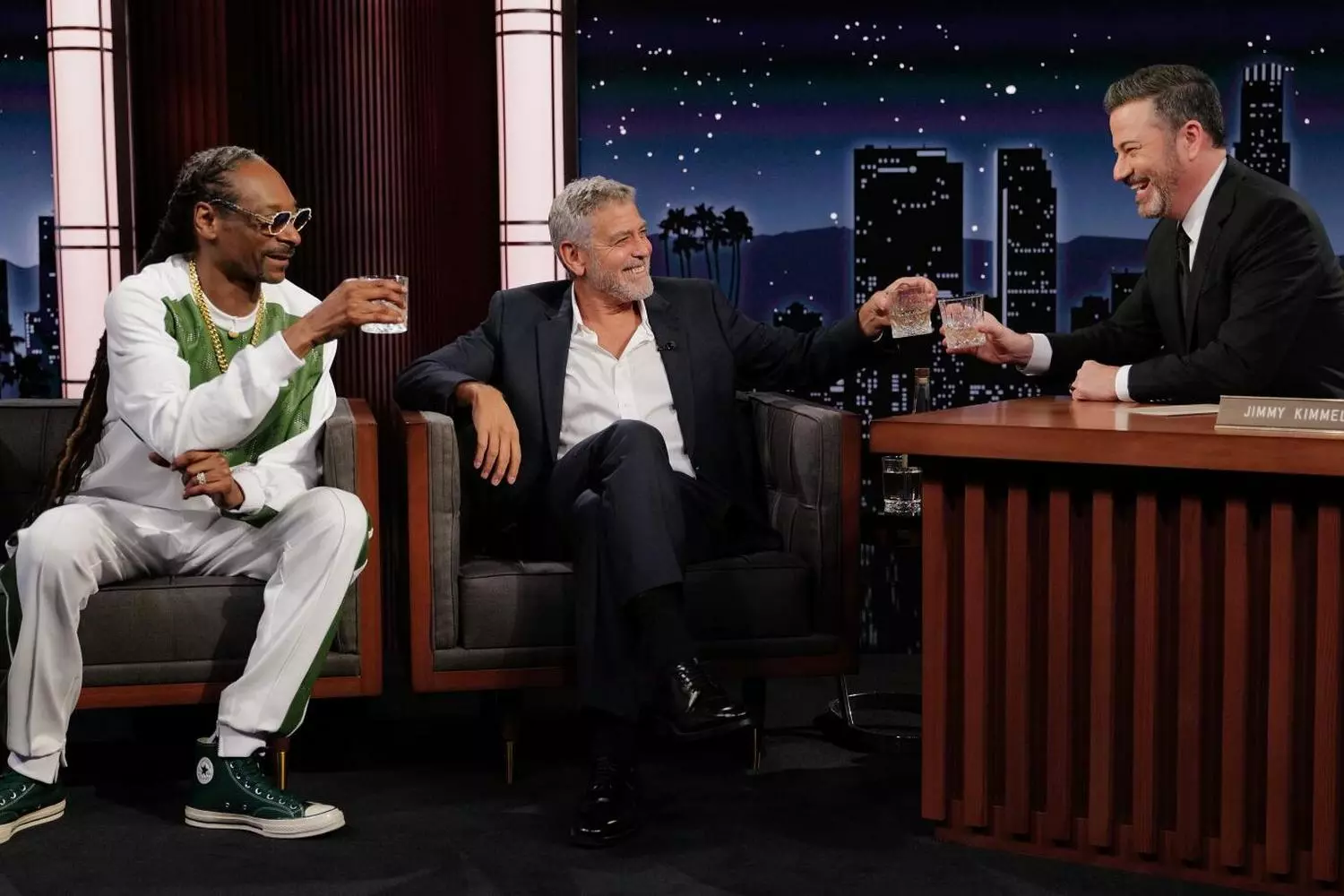
Iconic TV Shows and Series That Won America’s Heart
Television shows and series in the USA are not just entertainment — they are a cultural code, a water-cooler conversation, a meme on social media, and even a way of self-identification. In a world where anyone can choose streaming, TV, or YouTube, it is precisely the shows with millions of viewers that continue to shape the nation's taste. Let’s take a look at the brightest, highest-rated, and most iconic American TV projects of recent years.
- 01. «NCIS» — the timeless classic of the crime genre
- Platform: CBS
- Start: 2003
- Plot: agents of the Naval Criminal Investigative Service investigate crimes related to the military and navy.
This series is remarkably stable: it has been among the top in viewership for decades, especially among adult audiences. The secret of its success is the formula "one episode — one case," charismatic characters, and an almost family-like atmosphere.
Interesting fact: NCIS is one of the few series to spawn multiple spin-offs: NCIS: Los Angeles, NCIS: Hawaiʻi, and NCIS: Sydney.
- 02. «The Voice» — the show that discovers stars
- Platform: NBC
- Start: 2011
- Format: blind auditions, celebrity coaches, talent battles.
«The Voice» became an alternative to the aging American Idol and immediately won the audience's love. The main feature is that the coaches do not see the contestants and rely solely on their voices. Stars such as Adam Levine, Shakira, Blake Shelton, Ariana Grande have participated in the show.
- 03. «The Bachelor» — romance, intrigue, and drama
- Platform: ABC
- Start: 2002
- Concept: a single man chooses a bride from a group of women. All this happens against the backdrop of luxurious villas, dates, and cameras.
Despite criticism for being scripted and manipulative, the show remains one of the most talked-about in the USA. It has spawned dozens of spin-offs, including The Bachelorette and Bachelor in Paradise.
- 04. «Law & Order: SVU» — a drama turned institution
- Platform: NBC
- Start: 1999
- Theme: sex crimes, legal dramas, psychological portraits.
This is one of the longest-running shows in American TV history. The main character — Detective Olivia Benson — has become a true icon of a strong woman on screen.
Fact: the series not only entertains but also raises pressing social issues — from domestic violence to institutional discrimination.
- 05. «Yellowstone» — a neo-western that blew up the ratings
- Platform: Paramount Network
- Start: 2018
- About: the Dutton family manages the largest ranch in Montana and defends their land from developers, corrupt politicians, and Native American tribes.
Yellowstone is a rare example of a cable channel producing a real hit in the streaming era. Thanks to Kevin Costner and its cinematic style, the series became a revelation for those tired of urban dramas.
- 06. «Stranger Things» — 80s nostalgia + sci-fi
- Platform: Netflix
- Start: 2016
- Genre: sci-fi, horror, teen drama.
The series became a global hit thanks to its 1980s atmosphere, talented child actors, and a mix of science fiction with emotional storytelling. Stranger Things made Netflix synonymous with "home cinema."
- 07. «Game of Thrones» — an epic saga that changed TV
- Platform: HBO
- Start: 2011–2019
- Plot: the struggle of Westeros houses for the Iron Throne, dragons, politics, and magic.
The series became a global phenomenon. Millions of fans, thousands of theories, huge budgets, and a controversial finale — Game of Thrones will forever remain a crucial part of television history.
- 08. «60 Minutes» — journalism at its peak
- Platform: CBS
- Start: since 1968 to the present
- Format: documentary stories, interviews, investigations.
This show is a true standard of journalism. Politicians fear it, viewers respect it, critics applaud it. 60 Minutes knows how to do more than just tell — it knows how to reveal.
- 09. «Judge Judy» — people’s court live on air
- Platform: Syndication (various channels)
- Start: 1996–2021
- Concept: Judge Judy decides real civil cases with real participants.
This is not just a show, but a social phenomenon. Judge Judy Sheindlin became the highest-paid woman on American TV — for her fairness, sharpness, and charisma.
Why do people watch these shows?
- They evoke emotions — laughter, tears, anger.
- They create points of attraction — heroes who are loved and discussed.
- They capture the spirit of the times — whether nostalgia, search for truth, or craving for spectacle.
- They offer unprecedented quality — in filming, scriptwriting, and acting.
Interesting fact: The most-watched episode in American TV history is the finale of MASH* in 1983. Over 105 million people watched it — more than the Super Bowl that year.
The hits of American television are not just content. They are a mirror of society, its pains, dreams, and fears. And as long as the shows continue, America watches, debates, and falls in love with its screens again and again.

American Screen Royalty: Who Controls TV from the Inside
American television is not just about channels and shows, but also the people who bring them to life. News anchors, comedians, interviewers, judges, and producers — these individuals become more than just faces on the screen; they are true symbols of their eras. They are quoted, discussed, parodied, and loved. They are cultural figures shaping public opinion. Let’s get to know the most influential and recognizable television personalities in the USA.
- 01. Oprah Winfrey — "the First Lady of American Television"
- Show: The Oprah Winfrey Show (1986–2011)
- Format: interviews, inspiring stories, books, charity
Oprah is more than just a host. She is a brand, a voice of hope and change. Her show became the most influential daytime talk show in history. Any book she recommended in her book club instantly became a bestseller. And her famous line: "You get a car! You get a car!" became an internet meme long before TikTok.
Interesting fact: Oprah is the first Black woman billionaire in US history.
- 02. Jon Stewart — the satirist politicians listened to
- Show: The Daily Show (Comedy Central, 1999–2015)
- Format: political satire, news, comedic analysis
Stewart turned his satirical show into a source of alternative news. Millions of young Americans learned about politics primarily from his program. He didn’t just joke — he made people think. His style was later continued by his protégés: Stephen Colbert and Trevor Noah.
- 03. Stephen Colbert — the ironic voice of liberal America
- Show: The Late Show with Stephen Colbert (CBS)
- 特色: a blend of political satire, humor, and current analysis
Colbert offers intellectual humor wrapped in prime-time television. His monologues are watched not only for laughs but also for sharp commentary on current issues. He can make you laugh and think — all in one sentence.
- 04. Jimmy Fallon — the king of fun prime-time
- Show: The Tonight Show Starring Jimmy Fallon (NBC)
- Style: light humor, musical parodies, celebrity games
Fallon isn’t a traditional interviewer. He turns every guest into part of the show: singing with them, playing games, joking around. His YouTube videos gather millions of views, and his style reflects the "new television" with social media elements.
- 05. Anderson Cooper — the face of CNN and a voice of trust
- Show: Anderson Cooper 360° (CNN)
- Role: journalist, reporter, special broadcasts host
Anderson Cooper descends from the famous Vanderbilt family, but the public respects him not for his name, but for his honesty and calm presence on air. He has covered wars, natural disasters, and elections. His style is restrained yet emotionally precise.
- 06. Barbara Walters — the woman who opened doors
- Shows: 20/20, The View, historic interviews
- Legacy: the first female evening news anchor on American TV
Barbara Walters interviewed everyone — from Fidel Castro to Michael Jackson. Her style was gentle but persistent. She changed the approach to female journalism and became a professional role model.
- 07. Judge Judy — daytime TV star and icon of tough justice
- Show: Judge Judy (1996–2021), Judy Justice
- Format: reality court cases, often with humor and tough decisions
Judy Sheindlin is the highest-paid woman on American television. Viewers of all ages love her for her straightforwardness, sharp tongue, and unique courtroom style. In her courtroom, there’s no room for “waffling” — only facts!
- 08. Ryan Seacrest — the voice of generations and master of live broadcasting
- Shows: American Idol, Dick Clark’s New Year’s Rockin’ Eve
- Specialty: a versatile host — from pop culture to telethons
Ryan became the voice of American pop culture in the early 2000s. He knows how to hold the air, manage the chaos of live broadcasts, and create a true show atmosphere.
- 09. Shonda Rhimes and Greg Berlanti — TV producers writing America’s scripts
- Shonda Rhimes — creator of Grey’s Anatomy, Scandal, How to Get Away with Murder
- Greg Berlanti — architect of the Arrowverse (CW)
They’re not hosts, but everyone in the industry knows their names. They create what people later discuss in kitchens and on Twitter. Their influence isn’t on screen, but in how Americans experience their evenings.
Why are TV hosts in the USA more than just a job?
- They influence the country’s mood. A bad joke can cause a scandal, while an inspiring interview can change a life.
- They are a brand. In the US, a TV host is a trademark: with contracts, licensed products, and political weight.
- They carry responsibility. Especially in news, where accuracy and restraint can matter more than ratings.
Interesting fact: One episode of Oprah Winfrey’s show could boost book sales by 500,000 copies. Her influence was called the "Oprah Effect" — studied by economists and marketers.
American TV personalities are more than just faces on the screen. They are the voice of society, its rhythm, and emotional barometer. They are the ones who turn television into a living organism you want to return to again and again.
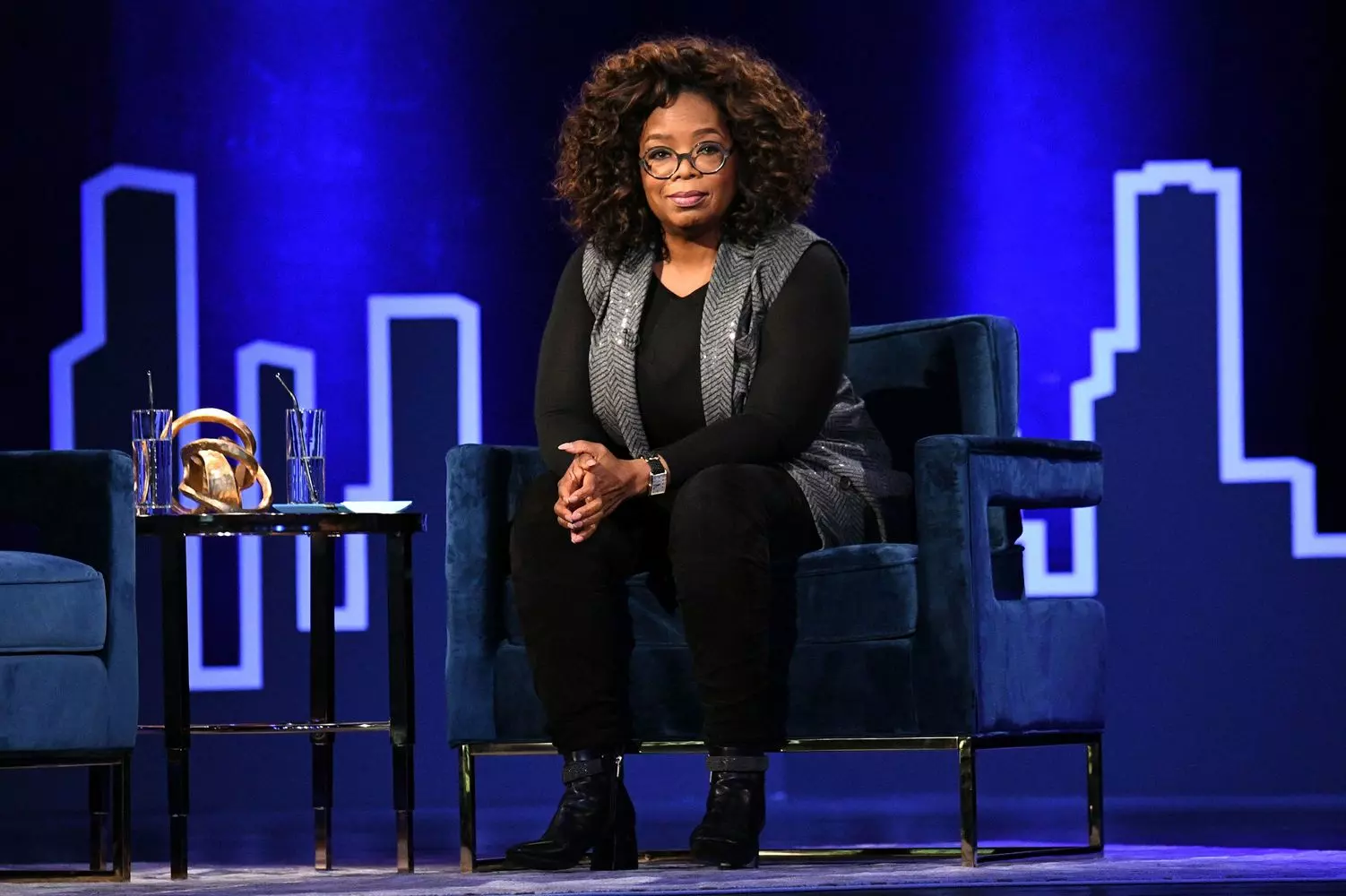
How to Access American TV: From Antennas to Cloud-Based Streaming
Television in the USA has long stopped being just “turn on the TV and watch.” The choices today are enormous: cable, antenna, apps, streaming, IPTV… Even the very concept of a “channel” is gradually disappearing — replaced by content available anytime, anywhere, on any device.
But how not to get lost in all these options? Where and how do Americans actually watch TV today? Let’s break it down with examples, pros, and cons.
- 01. Cable TV: old-fashioned but reliable
Cable television remains popular, especially among older generations and those who want “everything at once.” Providers include Spectrum, Xfinity, Verizon Fios, Cox Communications, and others. What viewers get:
- Packages ranging from 100 to 300+ channels;
- News, sports, movies, kids’, and regional channels;
- Built-in DVR (recording) and HD/4K support;
- Often bundled packages with internet and phone.
Cons: cost: from $60 to $150 per month, limited flexibility (channels come in bundles), lots of ads on broadcast channels. Best for those who want a traditional experience with a remote, TV guide, and full linear schedule.
- 02. IPTV and live streaming: flexible, modern, no antennas
A modern alternative to cable. IPTV means television via the internet. Major players include YouTube TV, Hulu + Live TV, Sling TV, FuboTV, DirecTV Stream. Advantages:
- Watch on any device (smart TV, laptop, phone);
- Easy to set up and cancel — no technician visit needed;
- Cloud DVR: record, pause, rewind;
- Flexible packages: choose only the categories you want (sports, movies, local channels).
Cons: internet required (preferably high-speed), prices start from about $40–$70/month, not all channels or sports events are available in all regions. This option is popular with millennials and those who don’t want to pay for unwanted channels.
- 03. Official TV channel websites: direct access
Most major TV networks now have official websites where you can watch live broadcasts and reruns in good quality. Access often requires a login from your cable or IPTV provider, or a separate subscription (for example, CBS All Access → Paramount+). Pros:
- Convenient to watch only the shows you want;
- High video quality;
- Often exclusive content and behind-the-scenes material.
Cons: not everything is free (especially live streams), authorization required.
- 04. OTA (Over-the-Air) — free antenna TV
Did you know that in the USA you can watch dozens of channels for free — just by buying an inexpensive antenna? How it works:
- You set up an indoor or outdoor HD antenna;
- Your TV scans for frequencies;
- You get broadcast channels including: ABC, CBS, NBC, Fox, PBS, MyNetworkTV, The CW, and others.
Interesting fact: in major cities like New York, Los Angeles, or Chicago, you can catch 40 to 80 channels for free!
Pros: absolutely free (buy the antenna once and that’s it), HD quality, no internet dependency.
Cons: limited selection (no cable or premium channels), signal quality depends on the area, requires a direct line of sight to transmitters. Perfect for those who want to save money or use TV as background noise.
- 05. Streaming apps and platforms: TV without a television
Today, almost every network and studio has its own app or service. This is the future of TV, where HBO Max (now just Max), Disney+, Peacock (NBCUniversal), Paramount+, Apple TV+, Netflix — although not a TV channel, Netflix is the biggest competitor to traditional TV. What you get:
- Access to libraries of series, movies, documentaries;
- New premieres earlier than on traditional TV;
- The ability to watch anywhere, anytime.
Pros: flexibility: watch what you want, when you want; mostly no ads; 4K content; subtitles; multiple language options.
Cons: each app requires a separate subscription ($5–20/month), you have to remember passwords, update apps, and paid premieres or exclusives can add up.
Interesting fact: More than 56% of Americans under 35 have already cut the cord in favor of streaming and IPTV. This is called "cord-cutting."
American TV is like a restaurant with a hundred kitchens: you can take a traditional set meal, or build your plate from your favorite dishes. The question is what you want — stability, flexibility, or saving money.
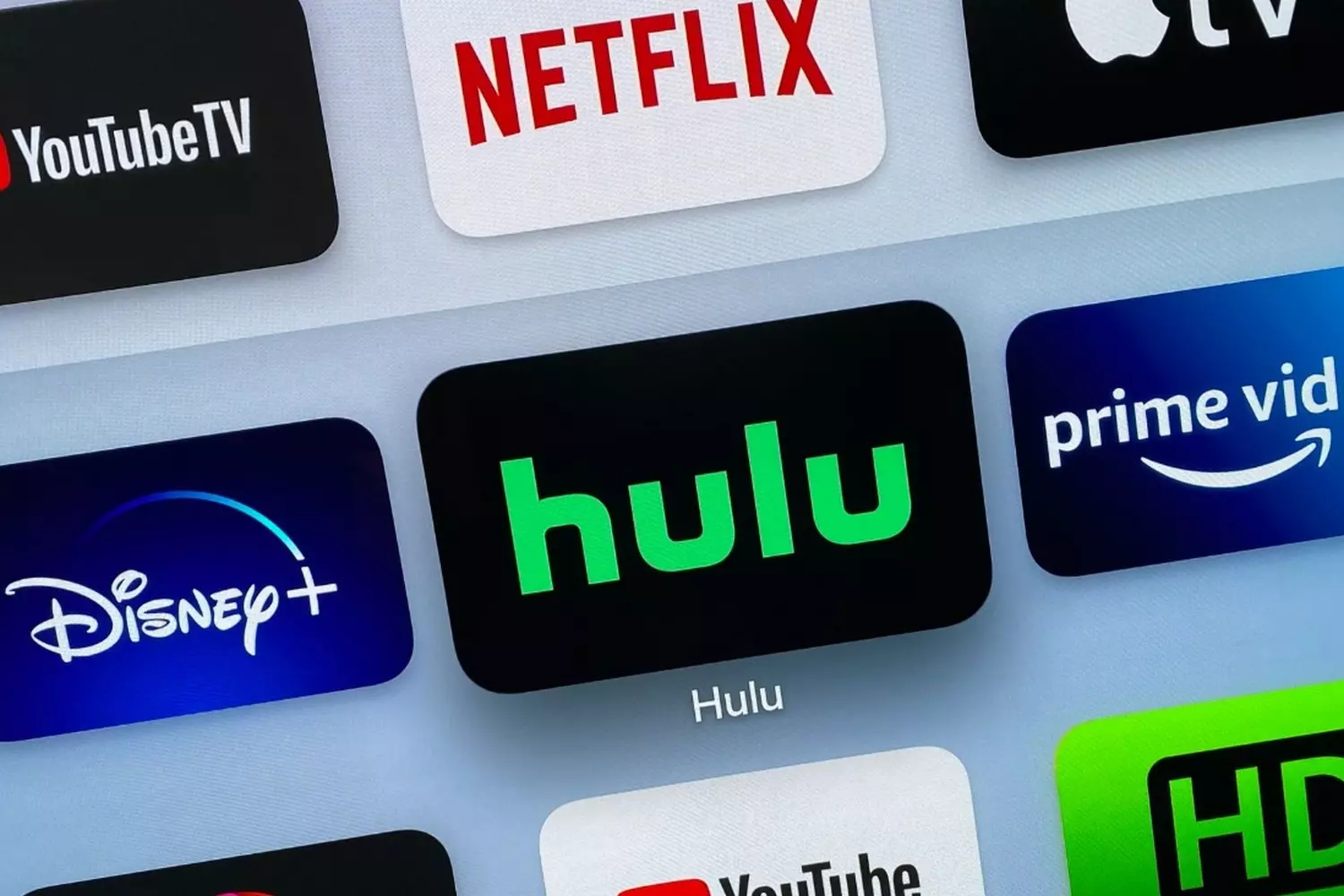
How Netflix and Other Streaming Giants Took Over U.S. TV
If we used to say "turn on the TV," today it's more like "what shall we watch on streaming?" Americans are increasingly ditching cable TV in favor of subscriptions that offer freedom of choice, no ads, and access to premieres. At the center of this revolution are Netflix and dozens of its competitors. Who are they, how do they differ, and what do millions of users watch every evening?
- 01. Netflix — the king of streaming and a cultural phenomenon
Netflix started in 1997 as a DVD-by-mail rental service. Today, it is a global streaming empire with more than 250 million subscribers worldwide. It doesn’t just show movies — it creates them. Why Netflix is attractive:
- A huge library of series, movies, documentaries, and anime;
- Complete absence of ads (in standard plans);
- Multilingual subtitles and dubbing;
- Content recommendation algorithms so accurate it feels like Netflix knows you personally;
- Original productions: Stranger Things, The Crown, Narcos, Wednesday, The Witcher.
Interesting fact: Netflix spends over $17 billion a year on creating original content — more than any studio in the world.
- 02. Peacock — NBC’s voice in streaming format
Created by NBCUniversal, Peacock offers a mix of classics and fresh premieres. Named after the peacock — NBC’s symbol. Advantages:
- Free basic access (with ads);
- NBC series, including The Office, Parks and Recreation, SNL;
- Original content (Poker Face, Bel-Air);
- Sports broadcasts (Olympics, football, WWE).
For whom: fans of NBC, those nostalgic for sitcoms, sports lovers.
- 03. Hulu — a hybrid of TV and streaming
Hulu is both online television, a content library, and a home for auteur cinema. It is partly owned by Disney and acts as a “grown-up” alternative to Disney+. Features:
- Quick access to fresh episodes right after airing (next morning);
- Original hits: The Handmaid’s Tale, Only Murders in the Building;
- Live TV support (for an extra fee);
- Strong documentary and reality TV section.
Hulu is the choice for those who want to keep up with American TV without cable.
- 04. Disney+ — paradise for Disney, Marvel, and Star Wars fans
Since its launch in 2019, Disney+ has rapidly gained momentum, offering exclusives you can’t ignore. What’s here:
- The entire catalog of Disney, Pixar, Marvel, Star Wars, and National Geographic;
- Original series: The Mandalorian, Loki, WandaVision;
- No ads (in the standard subscription);
- Parental controls.
This is the perfect streaming service for families, geeks, and fans of the Disney universes.
- 05. Max (formerly HBO Max) — quality and cinematic scale
The transition from HBO Max to Max marked a new phase — content from Discovery, CNN, TLC, HGTV was added. Strong points:
- Prestigious series: Game of Thrones, Succession, Euphoria;
- A rich collection of movies, documentaries, and lifestyle shows;
- Exclusives from Warner Bros. and DC;
- Ability to watch in 4K at no extra cost.
Max is for those who appreciate style, production, and drama at its best.
- 06. Amazon Prime Video — a bonus for shopaholics and cinephiles
Part of the Amazon Prime subscription. Many are surprised by the quality and diversity of its content. Advantages:
- Hits: The Boys, Reacher, The Marvelous Mrs. Maisel, Fallout;
- Renting new movies — watch before they come out on discs;
- A large selection of foreign and independent films;
- Included in Amazon Prime (delivery, music, etc.)
For whom: for those who already use Amazon and want maximum entertainment in one place.
- 07. Apple TV+ — a platform with ambitions and awards
Apple doesn’t chase volume but bets on quality. Every series is like a movie. Original projects:
- Ted Lasso — a comedy that won hearts and an Emmy;
- The Morning Show with Jennifer Aniston and Reese Witherspoon;
- Severance, Silo, For All Mankind — stylish and deep stories.
Pros: highest production quality, reasonable subscription price, no ads.
Interesting fact: In 2023, the average American subscribes to 4 streaming services. But statistically, they usually use only two.
Streaming services have given viewers what they dreamed of for decades: to watch what they love, whenever they want, without ads, and in high quality. But with this came "choice fatigue": so much content that without recommendations and guides it’s easy to get lost.
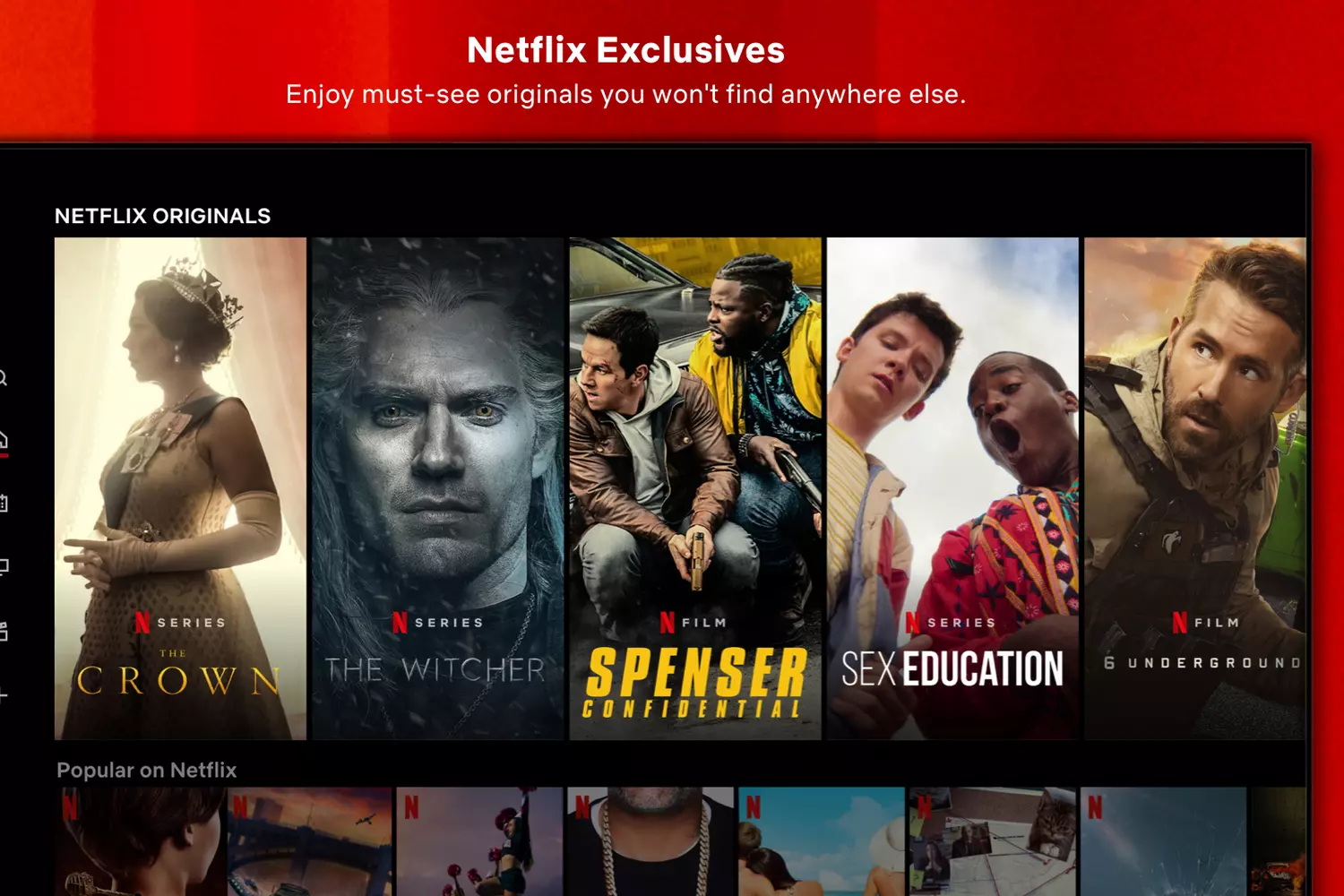
The Arena of TV: How American Networks Mold Politics and Collective Consciousness
In the USA, television is not just background noise for an evening’s relaxation. It is a powerful political tool that shapes perceptions of events, leaders, and even reality itself. In an era of total media fragmentation, American TV has become an arena where ideologies, interests, and beliefs clash daily.
- 01. When news becomes a weapon
TV channels in America influence not only what people talk about but also how they discuss it. Political TV is not just a separate genre — it is the foundation of the American media landscape. Why this works:
- Television remains the most trusted source of news among older generations;
- The visual format adds weight to words — faces, emotions, voice;
- Repetition of topics creates an agenda-setting effect: if it’s shown every day, it must be important.
- 02. Fox News: the voice of conservative America
Founded by Rupert Murdoch in 1996, Fox News quickly became a stronghold of the right-wing. Its audience consists of conservatives, Republicans, and residents of small towns and suburbs. The channel is known for its aggressive style, hosts like Sean Hannity and (formerly) Tucker Carlson, and its uncompromising criticism of the liberal elite. Nevertheless, Fox News’ ratings are consistently higher than CNN and MSNBC, especially during evening prime time. The channel does more than inform — it mobilizes. - 03. MSNBC: the mouthpiece of progressive views
MSNBC is the opposite of Fox. It focuses on minority rights, social justice, climate issues, feminism, and fighting inequality. Hosts like Rachel Maddow, Joy Reid, Lawrence O’Donnell shape the liberal agenda, especially popular among university circles and young professionals. The channel’s feature is its emphasis on analysis rather than just news updates. MSNBC is more of a talk-show with facts than a straight news broadcast. - 04. CNN: between objectivity and trying to please everyone
CNN was once synonymous with neutral news. The first 24-hour news channel to become a global brand. But times have changed. In a politically polarized environment, even striving for neutrality is seen as taking a side.
CNN tries to balance criticism of Trump without fully supporting Biden, but it is simultaneously criticized by conservatives (for a “liberal bias”) and progressives (for “softness” and “commercial populism”).
The CNN phenomenon today is an attempt to stay in the middle of the road when the road itself is already divided. - 05. The bubble of beliefs: everyone watches their own TV
With the rise of cable, then the internet and streaming, every American can choose the media that matches their views. This has led to what scientists call the filter bubble — an information bubble. What this means:
- Liberals watch MSNBC and consider Fox News “propaganda”;
- Conservatives tune into Fox and are convinced CNN is “fake news”;
- Moderates often don’t watch TV at all — switching to podcasts or YouTube.
- 06. Television and elections: more than just an observer
American TV actively influences voters:
- It shapes “opinion leaders”;
- It promotes agendas;
- It creates political images (President Obama became a star after appearing on The Daily Show);
- It makes heroes — and antagonists.
Example: Fox News played a key role in mobilizing Donald Trump’s electorate. MSNBC, in turn, largely supported the ideology of progressive candidates like Elizabeth Warren and Bernie Sanders.
Political TV in the USA is not just background — it is a tool. It shapes election behavior, influences trust in government, and even determines how Americans perceive world events. If you want to understand America — start with what it watches.
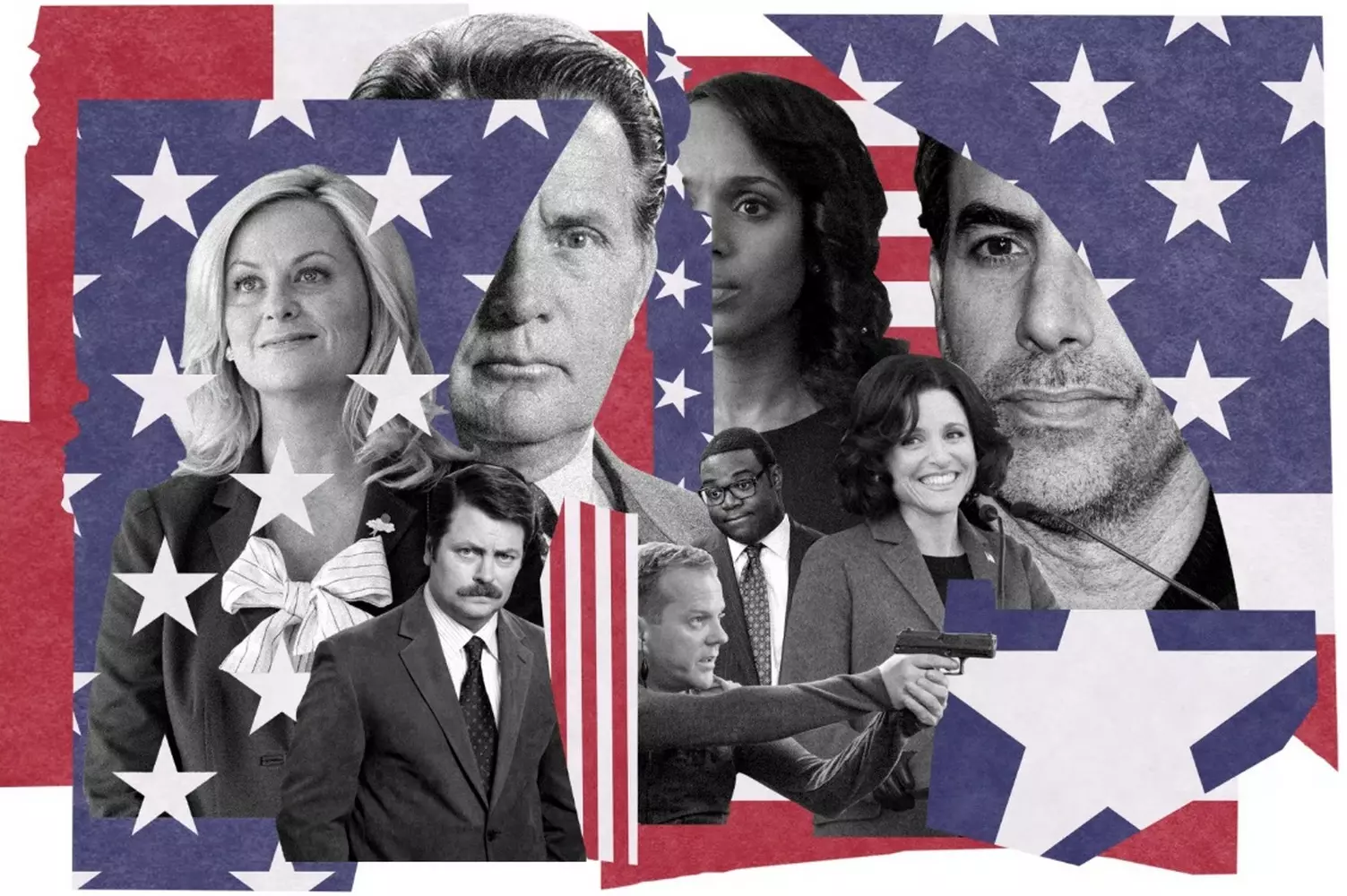
How TV Shapes the Nation: Influencing the Minds and Behaviors of Americans
Television in the USA is not just a box with news and series. It is a cultural matrix, a mentor, a political megaphone, and even a remote psychotherapist. Americans trust TV, argue with it, live according to its schedule, and absorb the ideas broadcast from the screen at an astonishing speed. How did this happen — and why does television’s influence in the USA remain colossal even in the age of streaming and TikTok?
- 01. Television as an architect of thinking
Television in America does not just entertain — it explains how the world works. Moreover, it does so regularly, vividly, and in formats that are easy to grasp even “on the go.” The influence of TV on thinking:
- Simplification of complexity — TV provides “ready-made” viewpoints, freeing the viewer from the need to analyze;
- Emotional anchor — events are perceived through the prism of the emotions of hosts and characters;
- Moral framework — series and shows broadcast norms of behavior, family, and justice;
- Repetition = truth — if it’s repeated every evening, it must be true.
- 02. Who speaks — influences
TV hosts, analysts, and show heroes are the “new priests” for millions. Viewers trust them as much as they used to trust a neighbor or a pastor in church. If Anderson Cooper (CNN) says the situation is critical — then it really is critical. Examples of influence:
- After the documentary series Making a Murderer aired on Netflix — hundreds of thousands of Americans signed a petition to review the case;
- Oprah Winfrey’s show once changed book sales, fashion, and even ways of thinking — this was called the Oprah Effect.
- 03. Everyday life dictated by TV channels
Americans, especially middle-aged and older, still live according to a “television schedule”:
- Morning — shows with weather, traffic, and coffee (Today, Good Morning America);
- Daytime — talk shows, reality TV, and news;
- Evening — dramas, prime-time shows, political talk shows;
- Late night — humor, comedy, irony about the day (The Tonight Show, The Late Show).
This creates rituality — each time of day has its own mood, intonation, and thus its own influence on the psyche.
- 04. TV as a mirror of family and upbringing
The USA is one of the few countries where television actively influences parenting models. From Full House to Modern Family, from Sesame Street to Bluey — children grow up on these examples, and parents take norms, templates, and reactions from them. What this means:
- Children learn through characters in cartoons and children’s shows (including tolerance, ecology, respect);
- Teenagers imitate series heroes, forming behavioral models;
- Parents trust educational channels like advice from a doctor.
Interesting fact: the show Sesame Street improves vocabulary and communication skills in children more than some school programs — according to the University of Kansas.
- 05. TV as an amplifier of anxiety and panic
When crises occur in the USA — natural disasters, epidemics, protests — television becomes the main source of anxiety. Remember COVID-19: largely, television shaped the mass behavior model — from panic to discipline. The influence during crises:
- Amplification of anxiety through constant repetition;
- Dramatization of events through imagery;
- Creation of enemy or hero images.
Psychologists call this the effect of “media hyperventilation”: the more you watch, the more you fear.
- 06. Echo chambers: when TV becomes a mirror of beliefs
Modern viewers in the USA tend to choose not what is objective, but what matches their beliefs. As a result, TV becomes an amplifier of opinion rather than its source.
- Conservatives watch Fox and feel justified;
- Liberals watch MSNBC and feel justified;
- Independents turn off the TV and look for podcasts.
This leads to societal polarization: television doesn’t unite, but “puts people in opposite corners of the ring.”
- 07. Television and consumer behavior
Advertising, integrations, lifestyles — all this penetrates the viewer much deeper than it seems:
- People buy products they’ve seen on shows (Product Placement);
- Follow diets discussed by reality show characters;
- Choose vacations, style, and even doctors based on TV advice.
Example: after the release of Queer Eye on Netflix — sales of men’s cosmetics and bookings at barbershops in major cities in the USA increased by 28%.
It influences everything: the choice of president, school policies, living room design, parenting style, and even sleep. Viewers trust, imitate, and repeat. And as long as Americans keep turning on the TV, this glowing rectangle will continue shaping America — day by day, little by little.
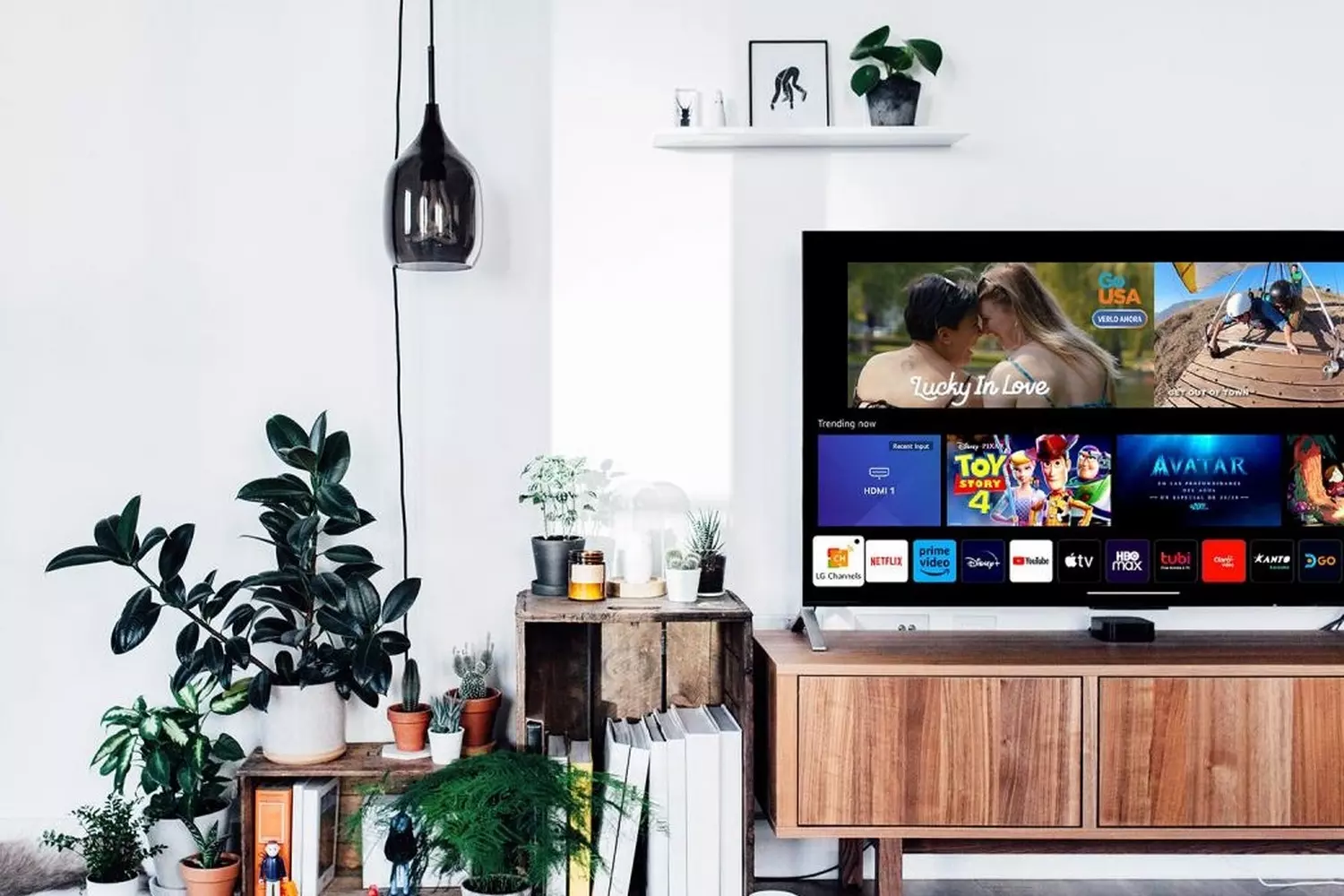
TV Without Limits: The Impact of Streaming, Subscriptions, and AI on Millions of Americans
The TV set that America knew in the 20th century is fading into the past. Cable wires — to the trash, satellite dishes — to the dump, remotes — into a drawer. Streaming is taking over, where television no longer broadcasts but listens. It knows what you like, suggests, remembers, and offers. Television has become personalized, mobile, and digital — and it is the USA that became the laboratory for this new reality.
- 01. The end of the cable era: what was and what is now
Just 10–15 years ago, an average American had a basic cable package costing $80–120 a month with a hundred channels — 90 of which nobody ever watched. Now this seems like a prehistoric anachronism. What has changed:
- Pay only for what you watch — now each show and platform has its own price;
- No (or very little) advertising;
- Mobility — the smartphone has replaced the TV;
- Control — pause, rewind, watch anytime.
- 02. Subscription as a lifestyle
In 2025, the average American has 3 to 5 active streaming subscriptions. It has become a habit, like the internet, takeout food, or Spotify. And it’s not just about Netflix.
Americans love choice, and streaming services offer exactly that — choices by taste, budget, and interests. Subscriptions have replaced the TV grid. There’s no “what’s on TV” here, only “what do I want right now.” - 03. Artificial intelligence: the new producer in your living room
AI has stopped being science fiction. It already decides what you’ll watch tonight. Streaming algorithms analyze: what you watched, what you quit halfway, what you liked, what’s popular among “similar” viewers.
Based on this, a personalized feed is built — like social networks, but instead of posts — shows, movies, series. Already now, 80% of Netflix views start with an algorithm’s suggestion, not a human search. - 04. Series — the main currency of streaming
Each platform today is primarily a content factory. Their exclusives are what sets them apart and what they fight for to win viewers. Platforms invest billions in original content because it’s important not just to attract viewers, but to keep them for a long time. - 05. American TV has gone global
Streaming has erased borders. Today American shows are watched in India, Brazil, South Korea — while Korean, German, and Spanish series are watched in the USA. Content has become multilingual and multicultural. Examples of phenomena:
- La Casa de Papel (Spain) became a hit in the USA thanks to Netflix;
- Squid Game (South Korea) — the most-watched series in the platform’s history;
- Dark (Germany), Lupin (France), Borgen (Denmark) — now part of the American media landscape.
- 06. The TV set is no longer necessary
Television is no longer dependent on the TV set. People watch on smartphones in the subway, on tablets in bed, on laptops in cafes, on smart TVs with remotes without numbers. The screen has simply become a window — the main thing is what’s on the other side: your personal series, movie, episode, or news. - 07. What’s next?
American TV continues to transform. Here’s what we will see in the near future:
- Interactive shows where viewers can influence the storyline;
- Voice-controlled content selection;
- Full AI integration in scripts and production;
- Fewer formats — more personalization;
- Individualized advertising, like on social networks.
American television no longer says: “Watch us!” It asks: “What do you want to see, feel, live today?” And every viewer is no longer just a viewer, but the programmer of their own media reality.
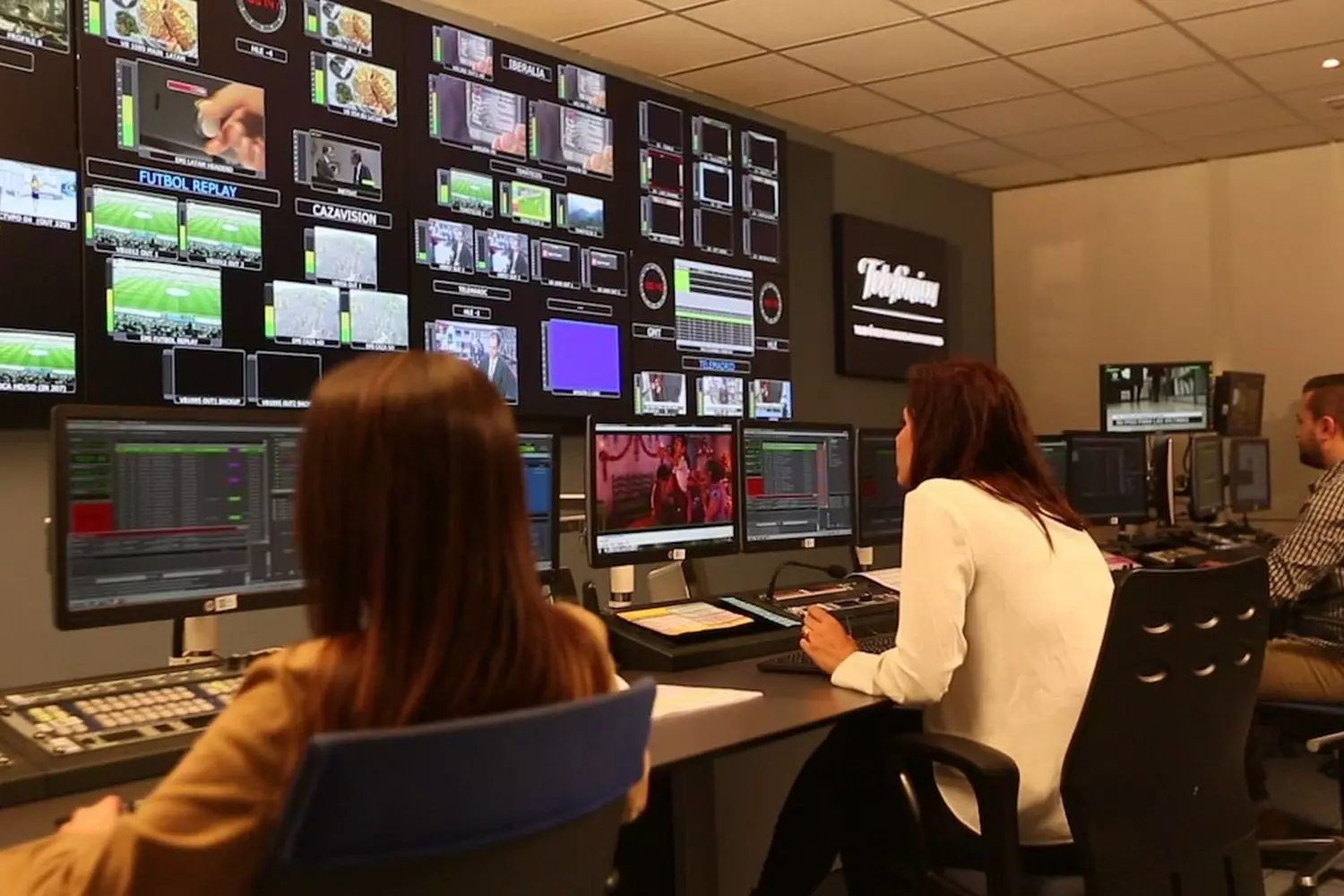
From Clock Ads to Reality TV: 10 Unexpected Facts About American Networks
American television is not just “Friends” and CNN. Over its nearly century-long history, it has undergone technological revolutions, political scandals, and cultural transformations. Did you know that the first paid channel was created because of a mountain blocking the signal? Or that local news is still watched 10 times more than Netflix? Below is a collection of little-known but fascinating facts about US television broadcasting.
- 01. The first TV commercial cost $9 and advertised a watch
In 1941, New York station WNBT aired a 10-second commercial for Bulova watches during a baseball game. The tagline was “America runs on Bulova time”, and the company paid $9 for the airtime (about $170 today). - 02. Cable TV was invented by a TV salesman due to poor signal
In the 1940s, a resident of Mahanoy City, Pennsylvania, John Walson couldn’t sell TVs because a mountain distorted the broadcast signal. He ran a cable from an antenna on the hill to customers’ homes, creating the first cable network. - 03. “Dallas” changed prime time rules
In the 1980s, the oil tycoon drama “Dallas” drew 83 million viewers. Its success sparked a boom in prime-time soap operas and led to hits like “Dynasty”. - 04. Local news is more popular than streaming
Despite the Netflix era, local news broadcasts in the US are watched 8–12 times more than all streaming platforms combined. For example, in New York or Chicago, local channels remain the main source of information. - 05. HBO abandoned advertising because of… porn films
Since 1972, HBO has not aired commercials. Initially, this was a forced decision: airing erotic films at night made it impossible to find advertisers. Later, it became a brand feature. - 06. “Reality shows” began with politics
The first reality show analog was the program “Real People” (1980), which interviewed ordinary Americans. But even in the 1950s, politician Estes Kefauver broadcast Congressional hearings, which drew millions of viewers — this was called “the first reality TV in history.” - 07. MTV debuted with a music video nobody remembers
The first video aired on MTV on August 1, 1981, was “Video Killed the Radio Star” by The Buggles. Ironically, the song never became a hit but entered history as a symbol of the music revolution. - 08. The C-SPAN channel started broadcasting with a funeral
The first-ever C-SPAN broadcast (1979) was devoted to… a congressman’s funeral. This immediately announced the channel’s serious approach to political content. - 09. Nickelodeon tested cartoons on children in hospitals
In the 1980s, Nickelodeon brought pilot episodes of cartoons to children’s hospitals to see which ones the young viewers liked best. That’s how hits like “SpongeBob SquarePants” were chosen. - 10. CNN was the first to broadcast a war live
During Operation “Desert Storm” (1991), CNN aired live reports from Baghdad. Journalists stayed in the city even under bombing, and viewers saw the war “as it is.”
American TV is a mirror of technology, business, and society. From watch commercials to 4K broadcasts, it has traveled a path where even failures became catalysts for new formats.
Television is not just a “box with pictures.” It has changed culture, broken stereotypes, and even influenced politics. These facts prove that behind every channel there are people, ideas, and sometimes — pure crazy experiments.
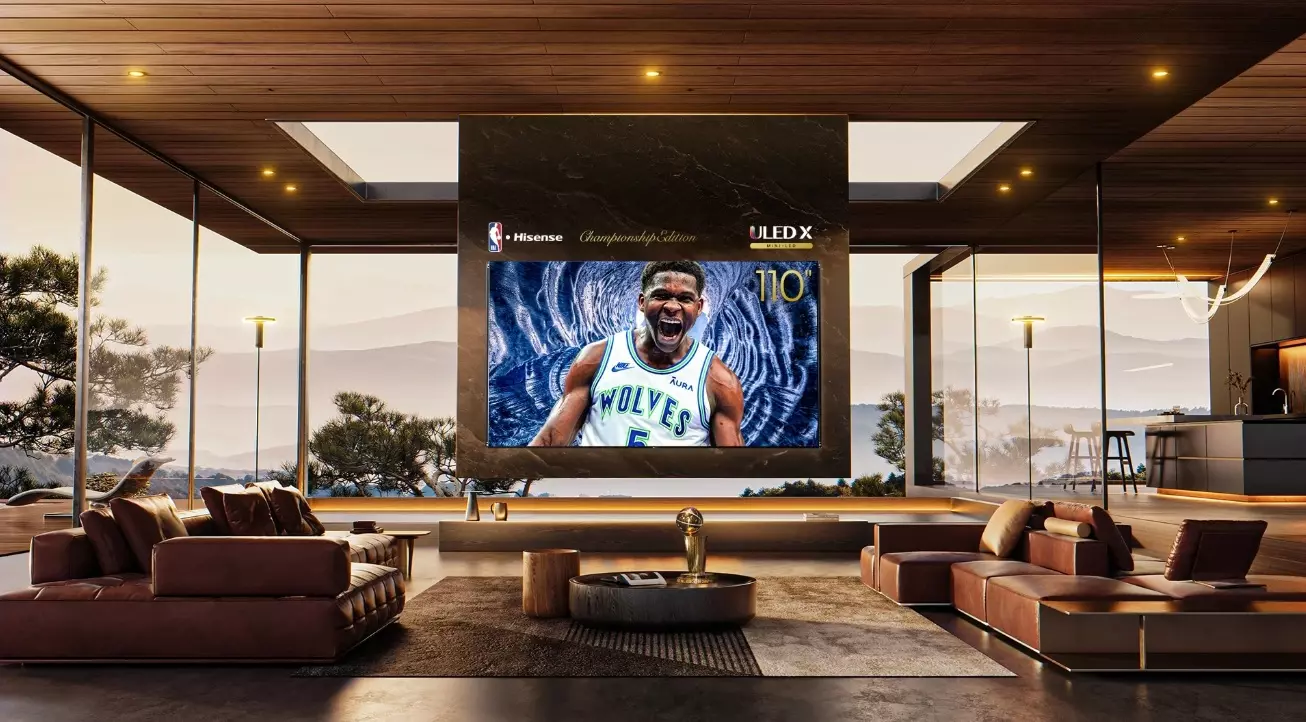
Finding Your Way in American TV Is Simple with a Trusted Assistant
The US television market truly amazes with its scale and diversity. Channels for children and scientists, for sports fans and political debates, for nostalgia and novelty — all of this is available, but it requires understanding. Without knowing the details, it’s easy to get lost among the names, platforms, and subscriptions.
But television is not just about “what to watch.” It is part of American culture, a reflection of the mentality, a way to get closer to understanding the country. And this is especially important if you are planning a trip or a move.
American Butler offers not only consultations on connecting TV and streaming services but also tours that help you discover America as it really is — alive, authentic, and multilayered. We organize:
- Trips to film studios and media centers — from Universal Studios to television museums;
- Concierge services for new residents and travelers;
- Personal assistance with connecting to services and platforms that will make your stay in the USA more comfortable.
Want not just to watch American TV, but to taste and feel America from the inside? Turn to American Butler — and discover the country through the eyes of those who truly understand it.
























